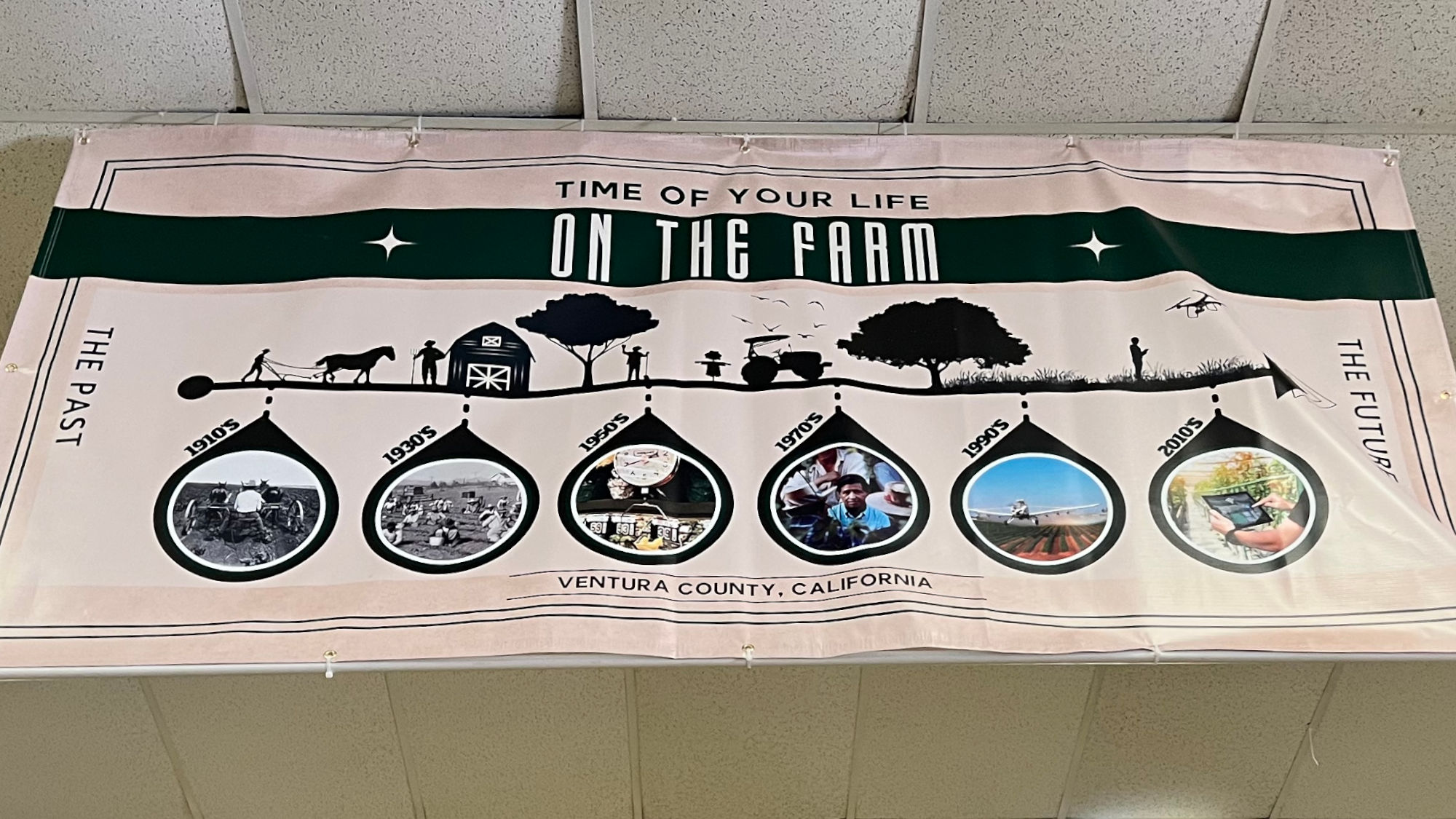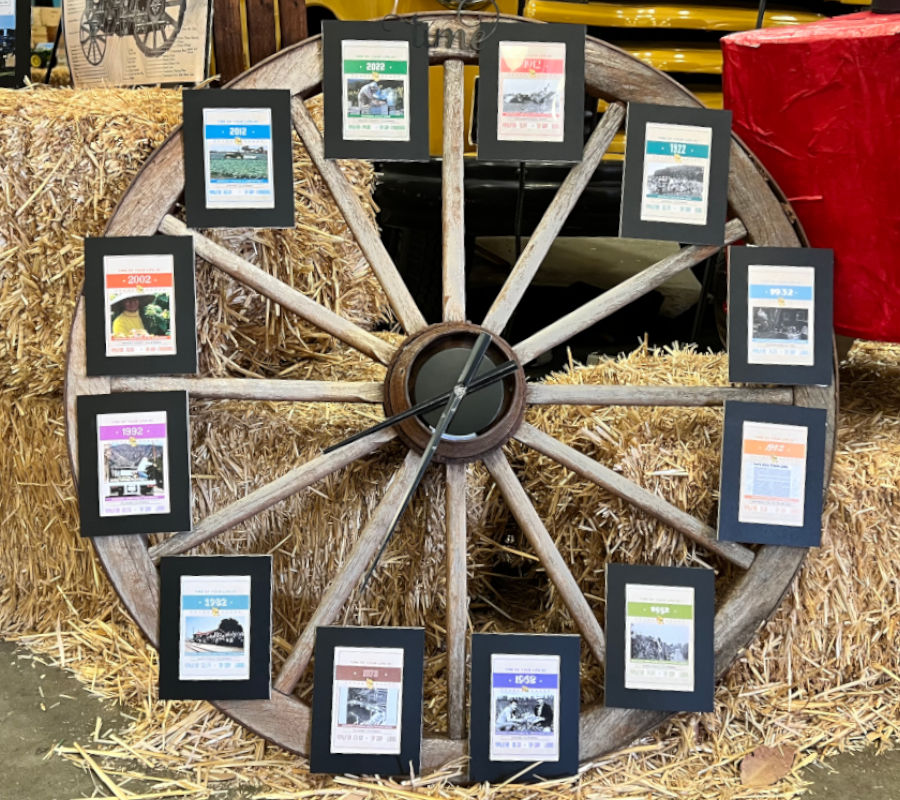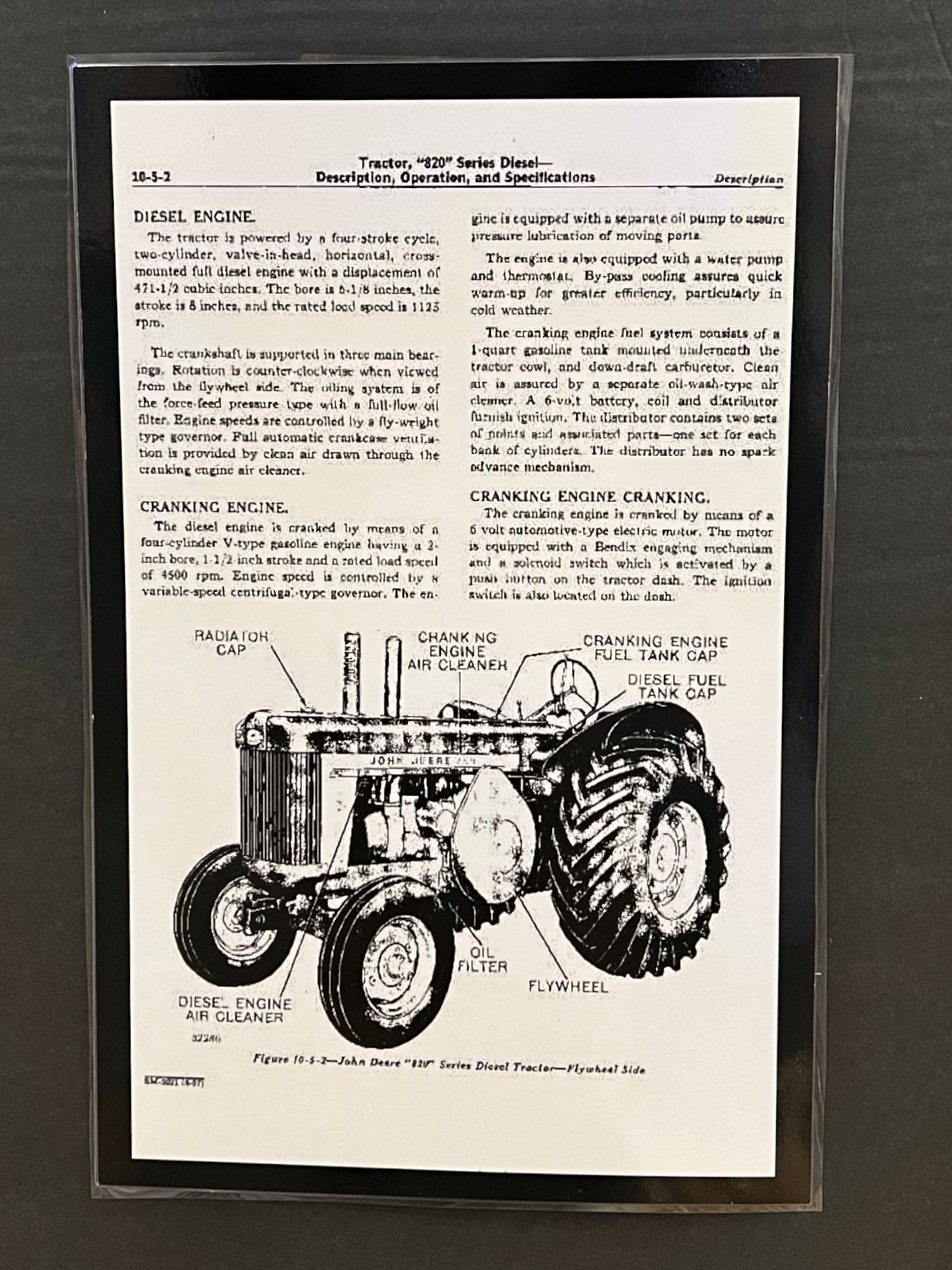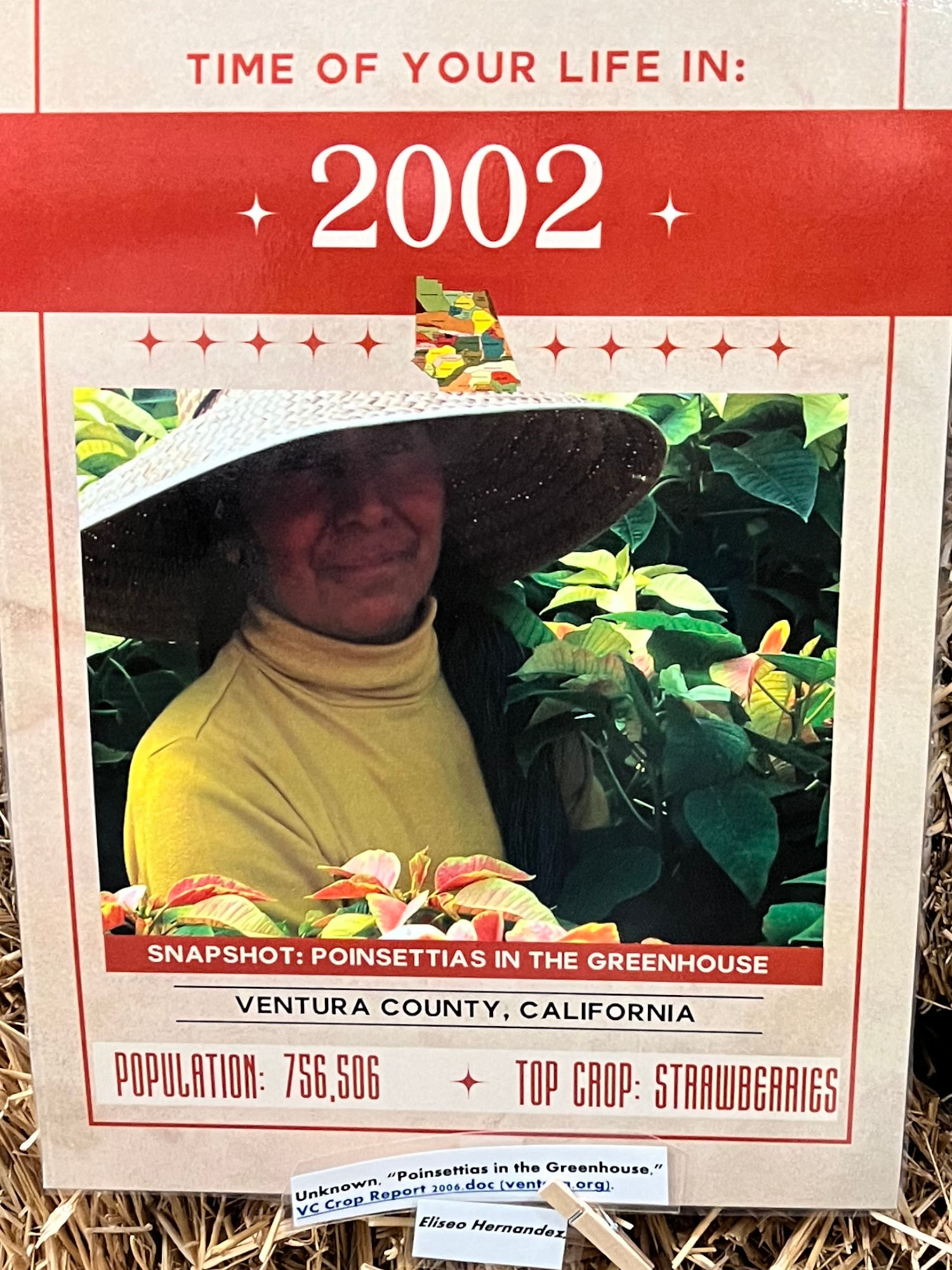| 1912 | |
|---|---|
| County of Ventura Agriculture / Weights & Measures | |
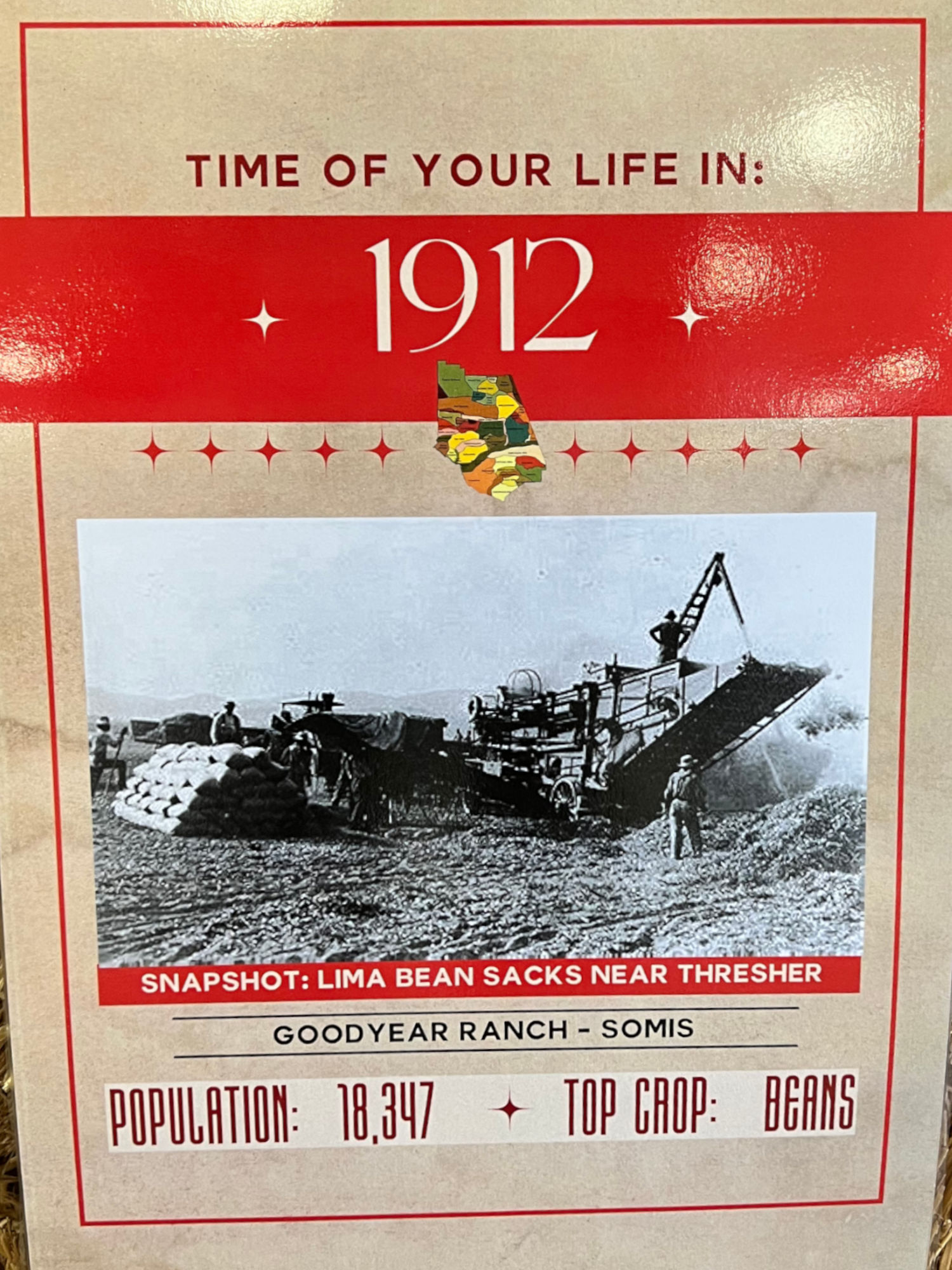 |
SNAPSHOT: LIMA BEAN SACKS NEAR THRESHER GOODYEAR RANCH - SOMIS
|
On September 30, 1912, Ventura County published its first crop under the direction of commissioner R.S. Vaile. He warned of a serious pest plaguing Tulare County, yet he slightly boasted that the menacing Thrips were not found in Ventura. Ventura County's modest two-paged crop report indicated the top crops: grains, walnuts, and lima beans.
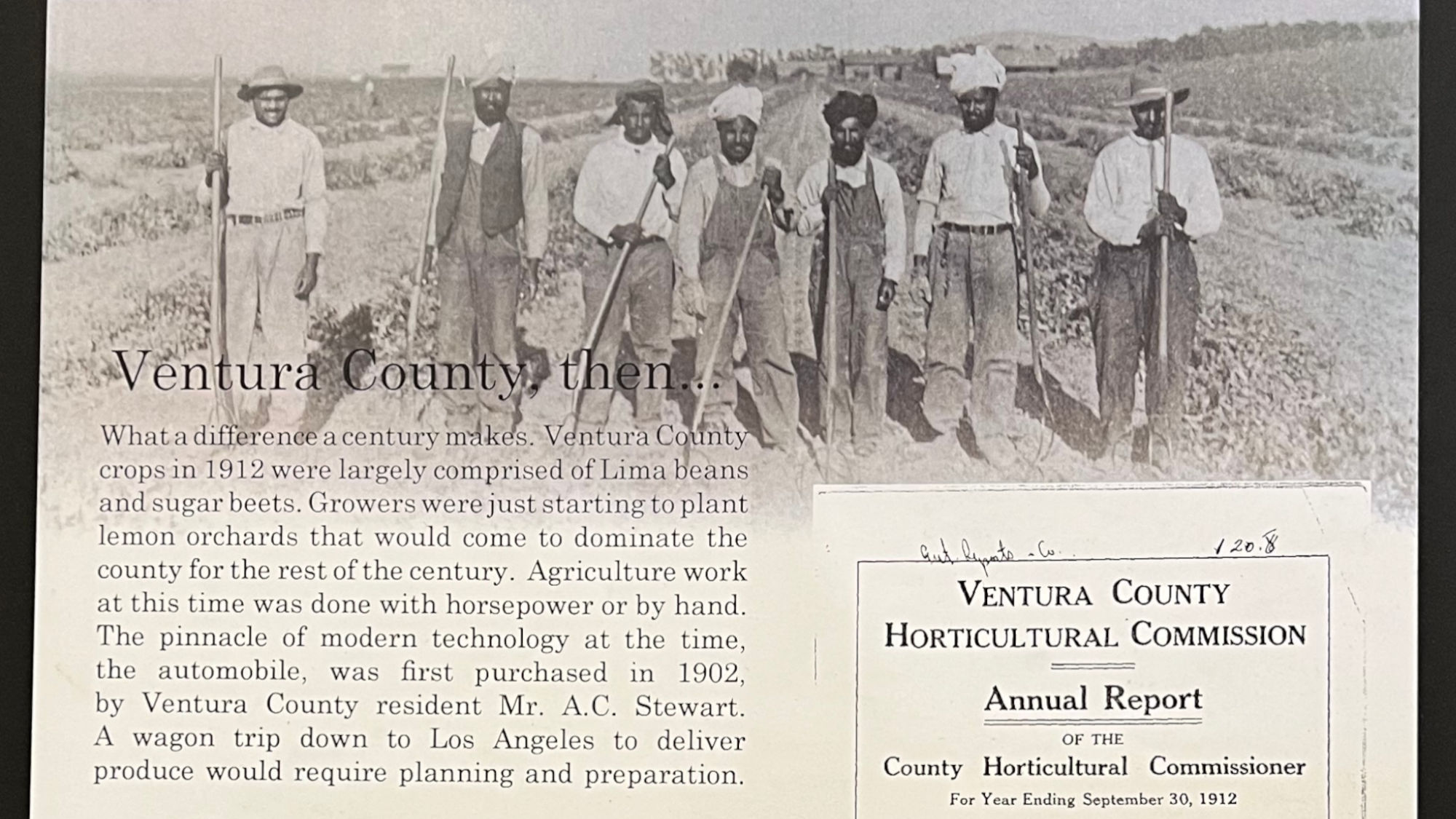
What a difference a century makes. Ventura County crops in 1912 were largely comprised of Lima beans and sugar beets. Growers were just starting to plant lemon orchards that would come to dominate the county for the rest of the century. Agriculture work at this time was done with horsepower or by hand.
The pinnacle of modern technology at the time, the automobile, was first purchased in 1902, by Ventura County resident Mr. A.C. Stewart. A wagon trip down to Los Angeles to deliver produce would require planning and preparation.
... and now
Ventura County in 2022 is a completely different. Outside of someone's back yard garden, you would be hard pressed to find lima beans or sugar beets.
Lemons still have an essential role in the county but have been surpassed in production value by strawberries.
They are joined by nursery stock, avocados, and raspberries all of which hold their own.
Tractors and trucks have replaced the horsepower of old, and we are witnessing the introduction of artificial intelligence powered farm equipment and drones. We now regularly send produce not just locally, but internationally. Over 70 different countries import Ventura County produce, including the Middle East, Europe, and Asia, whereas historically there were difficulties sending produce down to neighboring counties.
We are eager to see what challenges the next century will bring.
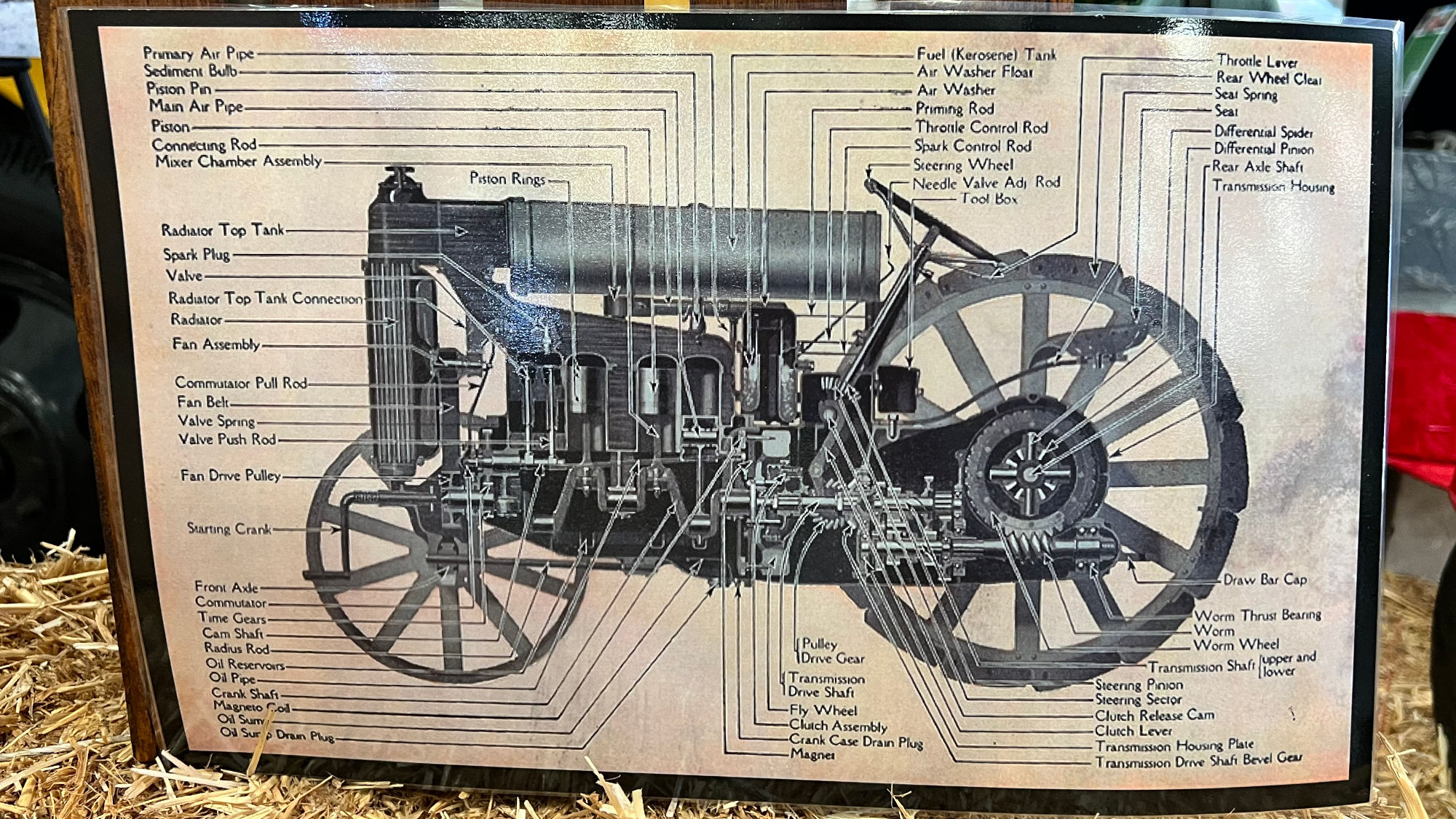
| 1922 | |
|---|---|
| County of Ventura Agriculture / Weights & Measures | |
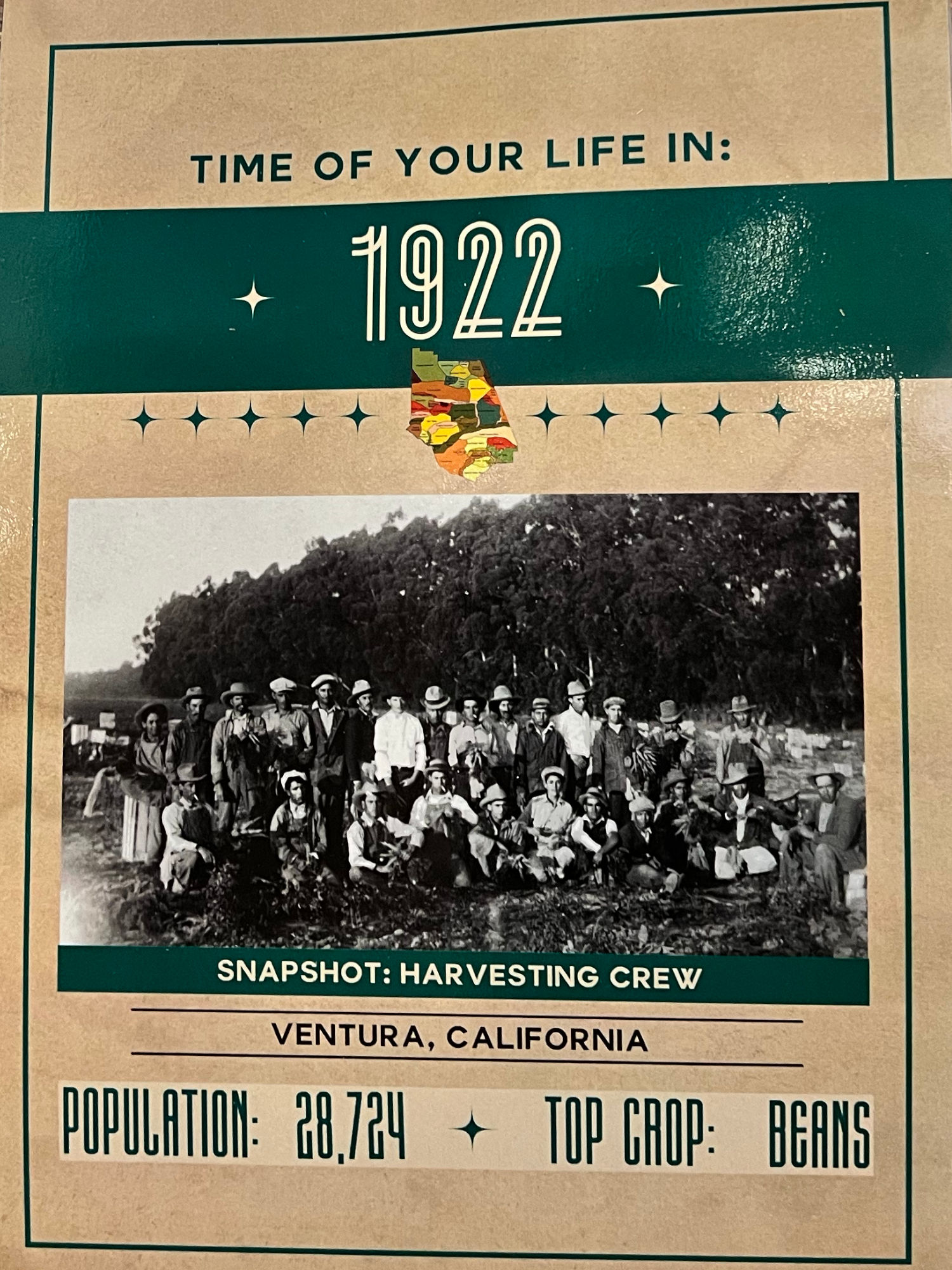 |
SNAPSHOT: HARVESTING CREW VENTURA, CALIFORNIA
|

Significant changes came to Ventura County after the turn of the century. Increased numbers of packing houses, canning services, machinery advancements, and transportation routes emerged throughout the county. The demands of the global markets shifted production away from extensive grain farming, which relied on large farms and minimal irrigation. Beans, processed as canned or dried, replaced grain as the top commodity. Lemons, walnuts, and apricots followed as the second, third, and fourth-place crops, respectively. Walnut and Lima bean production often coincided, walnuts benefiting from Lima beans' soil moisture retention and nitrogen contribution. Valencia oranges ranked fifth in value, while sugar beets ranked sixth. The Oxnard sugar beet factory, which operated from 1898 to 1959, played a significant role in the city's development. However, sugar production declined due to whitefly infestations and the focus on lemon and orange production. Hay, grain, and other miscellaneous citrus concluded the last positions of the top ten commodities.

 On August 3, 1921, the first crop duster using an ingeniously modified Macready Spread Lead Arsenate (LA) over six acres of catalpa trees at Postmaster Harry Carver's Farm Troy, Ohio.
On August 3, 1921, the first crop duster using an ingeniously modified Macready Spread Lead Arsenate (LA) over six acres of catalpa trees at Postmaster Harry Carver's Farm Troy, Ohio.The metal container, or makeshift hopper, released the powdery insecticide to cure the trees of its caterpillar infestation.
After five hopper fills and over 500 lbs. of LA powder later, the dusting was a success at accomplishing in minutes what it would take in days for a ground crew to do.
| 1932 | |
|---|---|
| County of Ventura Agriculture / Weights & Measures | |
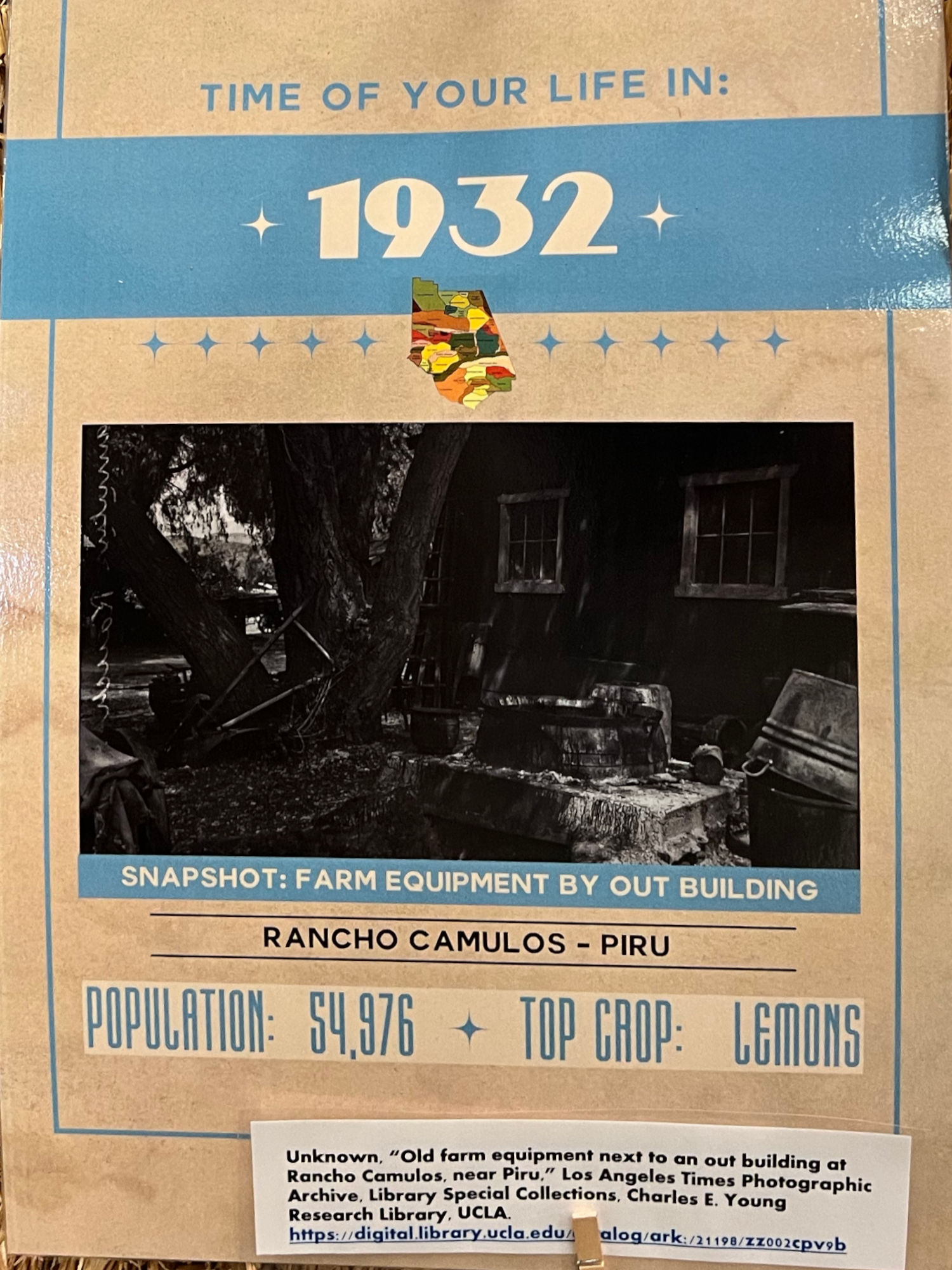 |
SNAPSHOT: FARM EQUIPMENT BY OUT BUILDING RANCHO CAMULOS - PIRU
|
Agricultural land and revenue boomed during World War I, but fell during the Great Depression and the 1930s. Lemons took the number one top commodity place, which was maintained until 1999. Oranges remained strong in the Oxnard plains and Santa Clara River Valley, with Valencias securing the second position and Navels seventh. Walnuts continued to hold a prominent place in third.
Post-WWI, bean production dropped from first to the fourth position, nonetheless, they still served as ground cover for citrus and walnut farmers and a source of income as cattle feed. Sugar beets held steadily in fifth place. Miscellaneous vegetables contributed significantly to the local economy in the sixth position.
Early farmers in Ventura primarily cultivated vegetables for local consumption with relatively limited export market shares. Hay ranked eighth, while apricots suffered the most, falling to ninth place. Many farmers diversified away from mono-cropping, opted for new drought-resistant varieties and relocated to the San Joaquin Valley instead of replanting in Ventura County. With citrus being so foundational to Ventura County's popularity, citrus nursery stock was in the tenth place. Between 1930 and 1940, about 3.5 million people moved out of the Plains states due to the Dust Bowls and the Great Depression.
In just over a year, over 86,000 people migrated to California. This number was more than the number of migrants durine the 1849 gold rush.


The Standard Oil Company first show cased the Flit Insecticide Sprayer in the '20s. Its design revolutionized insect control with an atomizer hand-operated pump. You would fill with pneumatic pump with liquid insecticide (flit = mineral oil); push air through the piston; aim it at menacing flies and mosquitoes; and blast away. Even the product design mystified its customers when the spray-can showed up in pop culture. Dr. Seuss, the Marx Brothers, and Ernest Hemingway referred the product in 1930 and 1938.
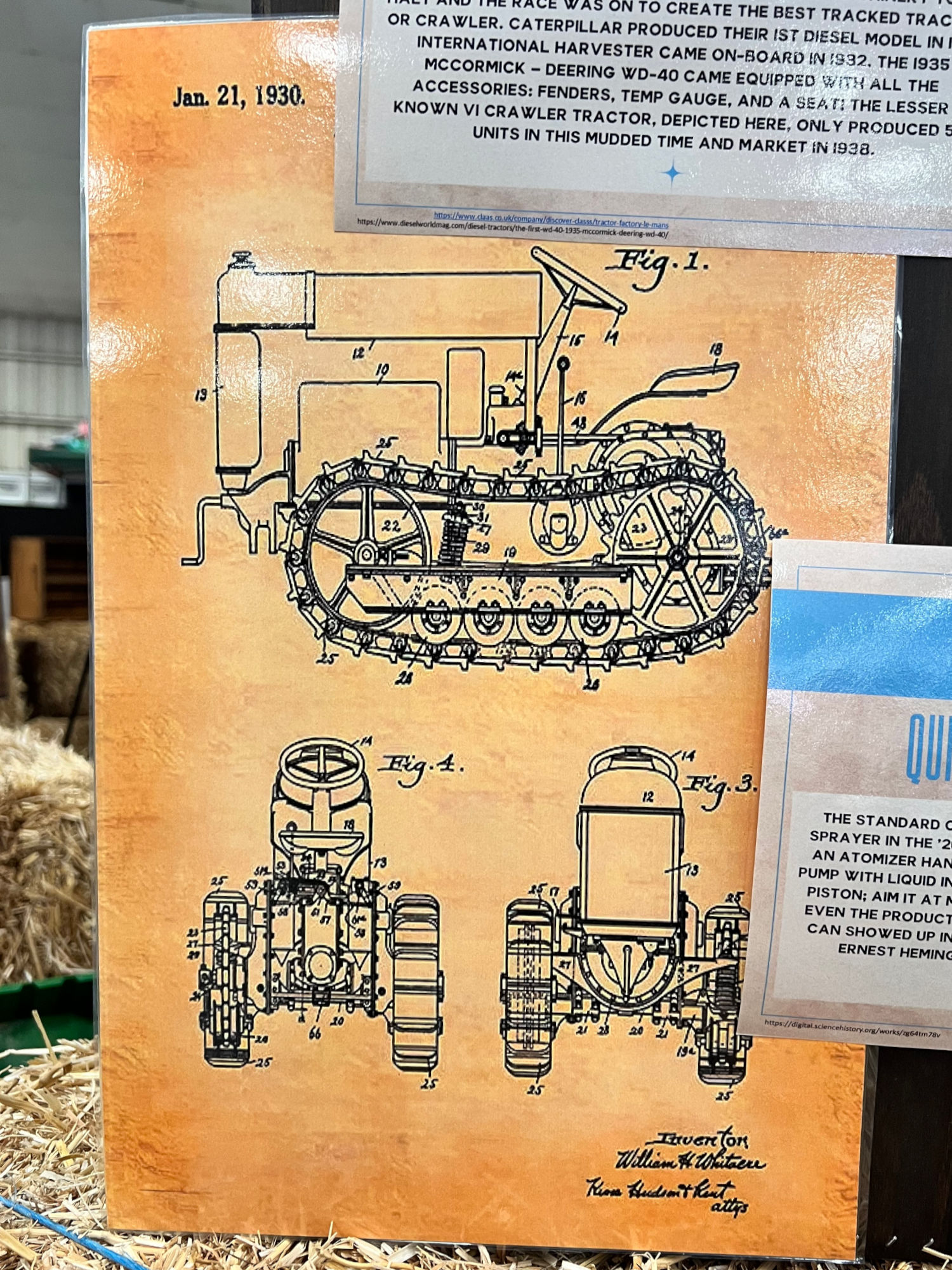
Before the 2nd world war dragged tractor machinery to a halt and the race was on to create the best tracked tractor or crawler. Caterpillar produced their 1st diesel model in 1931. International harvester came on-board in 1932. The 1935 McCormick - Deering WD-40 came equipped with all the accessories: fenders, temp gauge, and a seat: the lesser known VI crawler tractor, depicted here, only produced 57 units in this mudded time and market in 1938.
| 1942 | |
|---|---|
| County of Ventura Agriculture / Weights & Measures | |
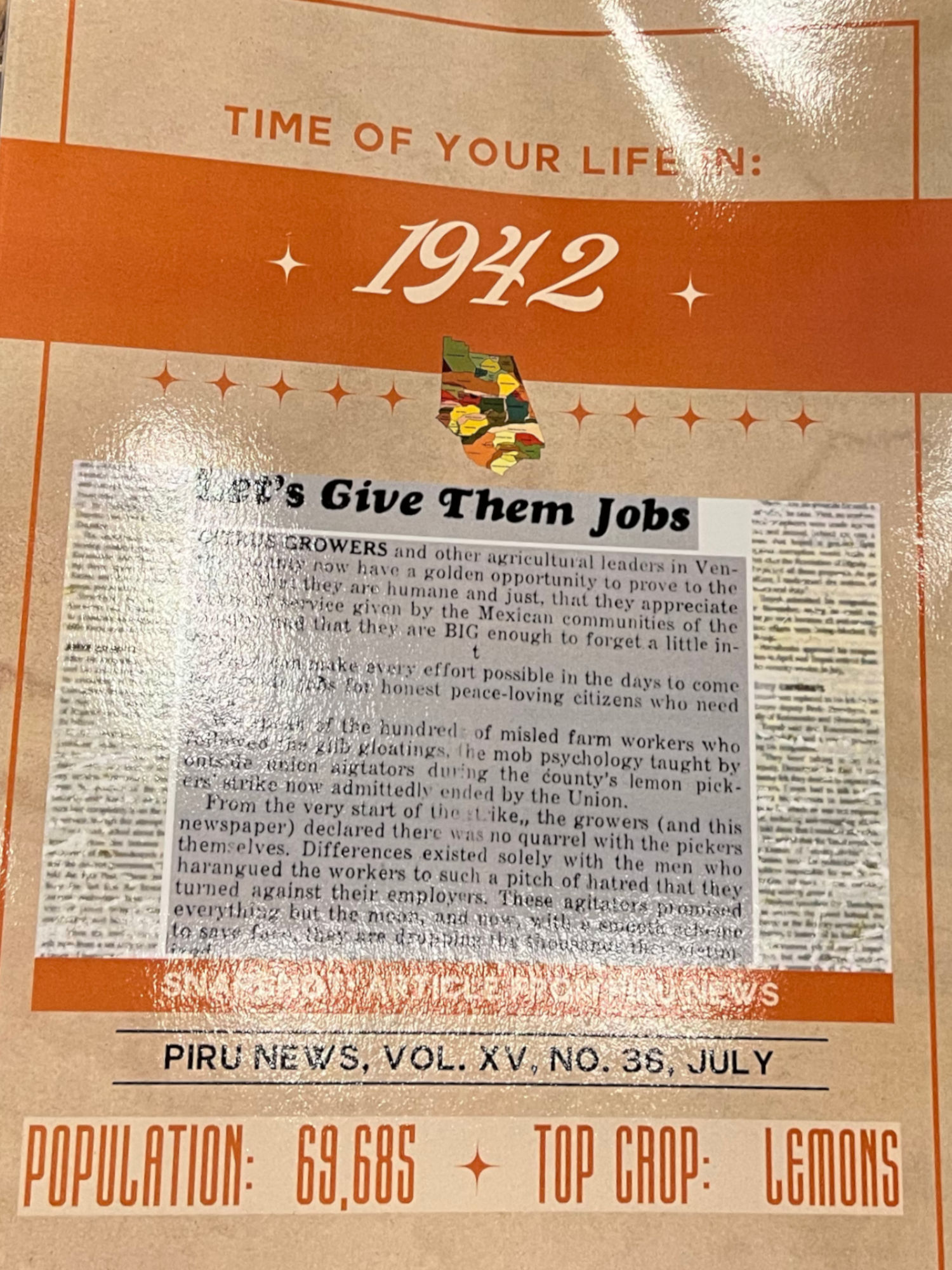 |
SNAPSHOT: ARTICLE FROM PIRU NEWS PIRU NEWS, VOLUMN XV, NUMBER 36, JULY
|
CITRUS GROWERS and other agricultural leaders in Ventura county now have a golden opportunity to prove to the world that they are humane and just, that they appreciate years of service given by the Mexican communities of the county, and that they are BIG enough to forget a little incident.
They can make every effort possible in the days to come to provide jobs for honest peace-loving citizens who need work.
We speak of the hundred of misled farm workers who followed the glib gloatings, the mob psychology taught by outside union agitators during the county's lemon pickers' strike now admittedly ended by the Union.
From the very start of the strike, the growers (and this newspaper) declared there was no quarrel with the pickers themselves. Differences existed solely with the men who harangued the workers to such a pitch of hatred that they turned against their employers. These agitators promised everything but the moon, and now, with a smooth scheme to save face, they are dropping the thousands they victim...
There was a labor shortage as the U.S. entered World War II, creating concerns about a food shortage. In response, the American and Mexican governments agreed to sign the Bracero Program Agreement, which brought temporary agricultural workers to the United States from Mexico. Some of those who worked during the program decided to stay and gained their citizenship. These workers significantly increased production for agriculture in Ventura and worked in the lemon groves, supporting it to become the number one crop. The higher relative humidity of Ventura, with cooler summers, was an environmental factor that made Valencia oranges the second place for that year, and Navels the ninth. Lima bean farming picked up production to create dry food stores and feed soldiers overseas.
With the deepwater port in Hueneme completed in 1942, global shipping became much more accessible, causing Lima beans to climb up to the third spot. Walnut production took the fourth place and miscellaneous vegetables slowly climbed to fifth. Livestock made its appearance on this list in the sixth place. Irrigation made grazing land more capable of producing feed to support livestock. Livestock production was returning to its glory days of the ranchos in Ventura, with dairy production at seventh. Dairy cows from California had been outproducing the national average since the '20s. It made sense that hay was in the eighth position to feed the growing cattle industry. Poultry came in tenth place but was on the rise.

John Deere 820 Tractor appeared just prior to the end of World War II. This tractor was coined the "Green Dash" for speed. However, due to fuel being in short supply, a limited number of tractors had wood carburetors and wood trailers. To lighten it's load.
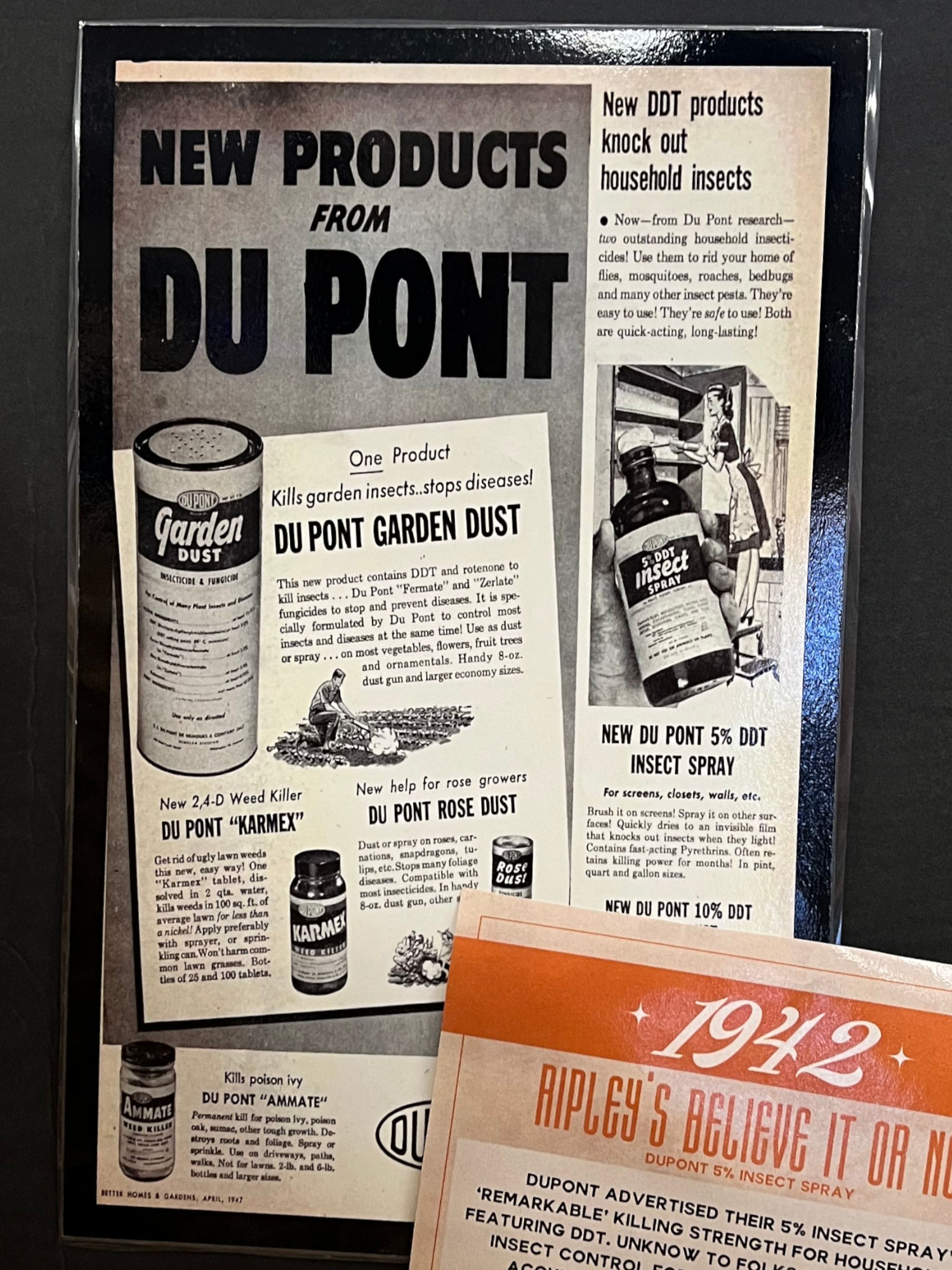
Dupont advertised their 5% insect spray's 'remarkable' killing strength for household pests featuring DDT. Unknown to folks of yester-year, this insect control for crop, livestock, and homes accumulated in fat tissues, traveled in the atmosphere, and persisted in the environment.
| 1952 | |
|---|---|
| County of Ventura Agriculture / Weights & Measures | |
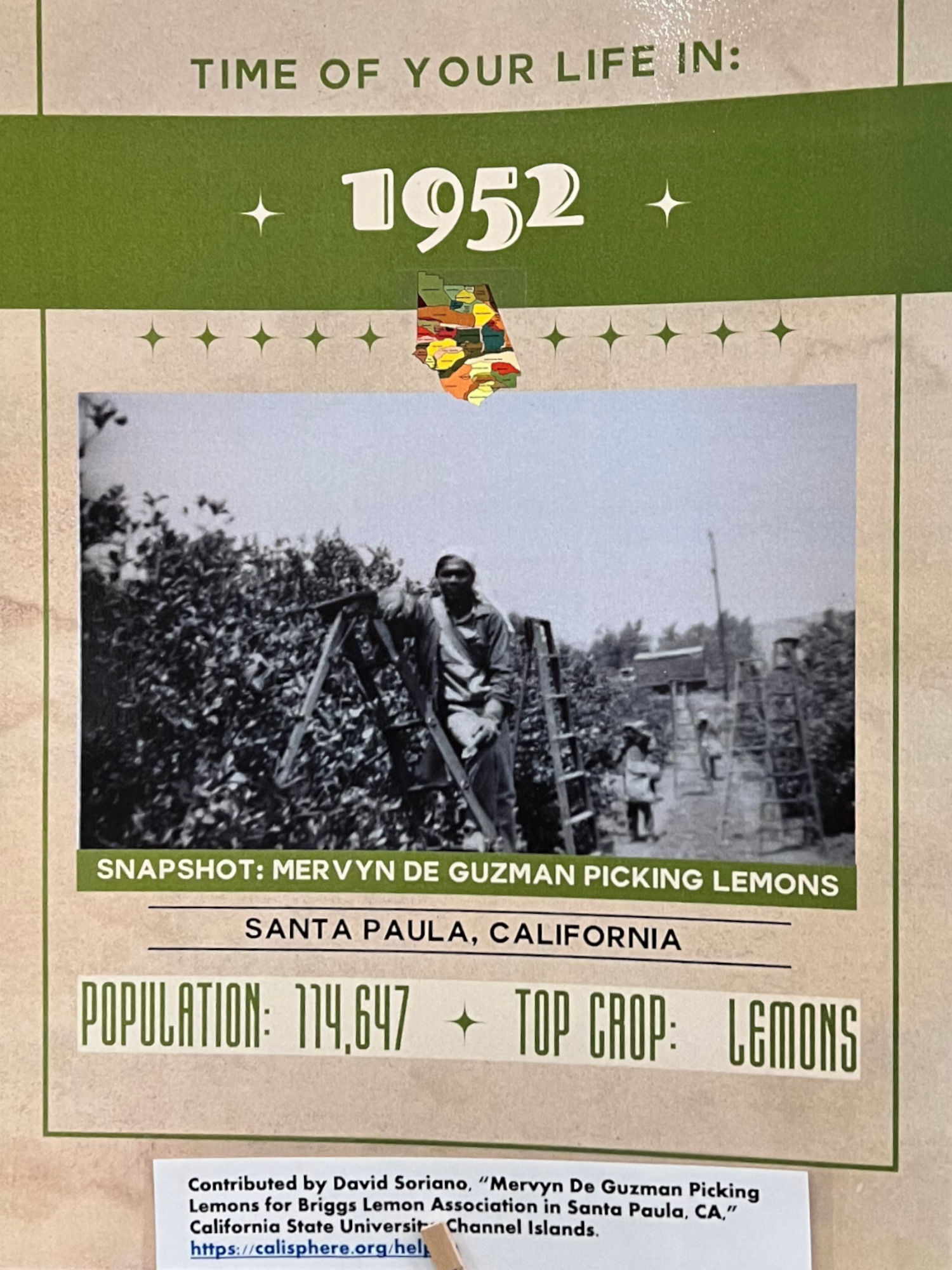 |
SNAPSHOT: MERVYN DE GUZMAN PICKING LEMONS SANTA PAULA, CALIFORNIA
|
Lemons remained number one, but post-war Santa Paula experienced changes that would affect the citrus industry. The completion of the Santa Paula Freeway and Highway 101 in this decade created even more routes for export. The growth of suburbia in America changed the ways people shopped. Previously, shopping for the home was usually done at several smaller shops, but the modern supermarket was starting to develop, creating one centralized space for consumers to buy fresh or frozen vegetables.
With the continuation of the Bracero Program, many farmers reallocated parts of their land from fields to housing for their workers. Property values went up, incentivizing farmers to sell their land. Regardless, citrus wasn't going anywhere, with Valencia oranges ranking second in production. Bean production still held the third position in the county, while miscellaneous vegetables' steady climb ranked them in the fourth position. Walnuts made their last appearance in fifth place due to the diversification of vegetable crops locally and new varieties of drought-tolerant walnuts grown in the Central Valley. Cattle, poultry and dairy were placed at sixth, seventh and eighth. Navel oranges held a steady ninth place from the previous decade, and grain held onto the tenth place.

Displayed in the center of this clock exhibit is the Ventura County AG. 1-ton pesticide sprayer truck. This 1953 Chevrolet 4400 was built by General Motors Corporation as one of their 1st lines of pickup trucks. The truck's bed was configured to hold a wooden water tank colorfully called the 'Yellow Submarine'. During its hey-day, former AG. Deputies and Supervisors used this truck for insecticide duties to control the Elm Leaf Beetle (Xanthogaleruca Luteola) and Tumbleweed abatement through-out Ventura County.
| 1962 | |
|---|---|
| County of Ventura Agriculture / Weights & Measures | |
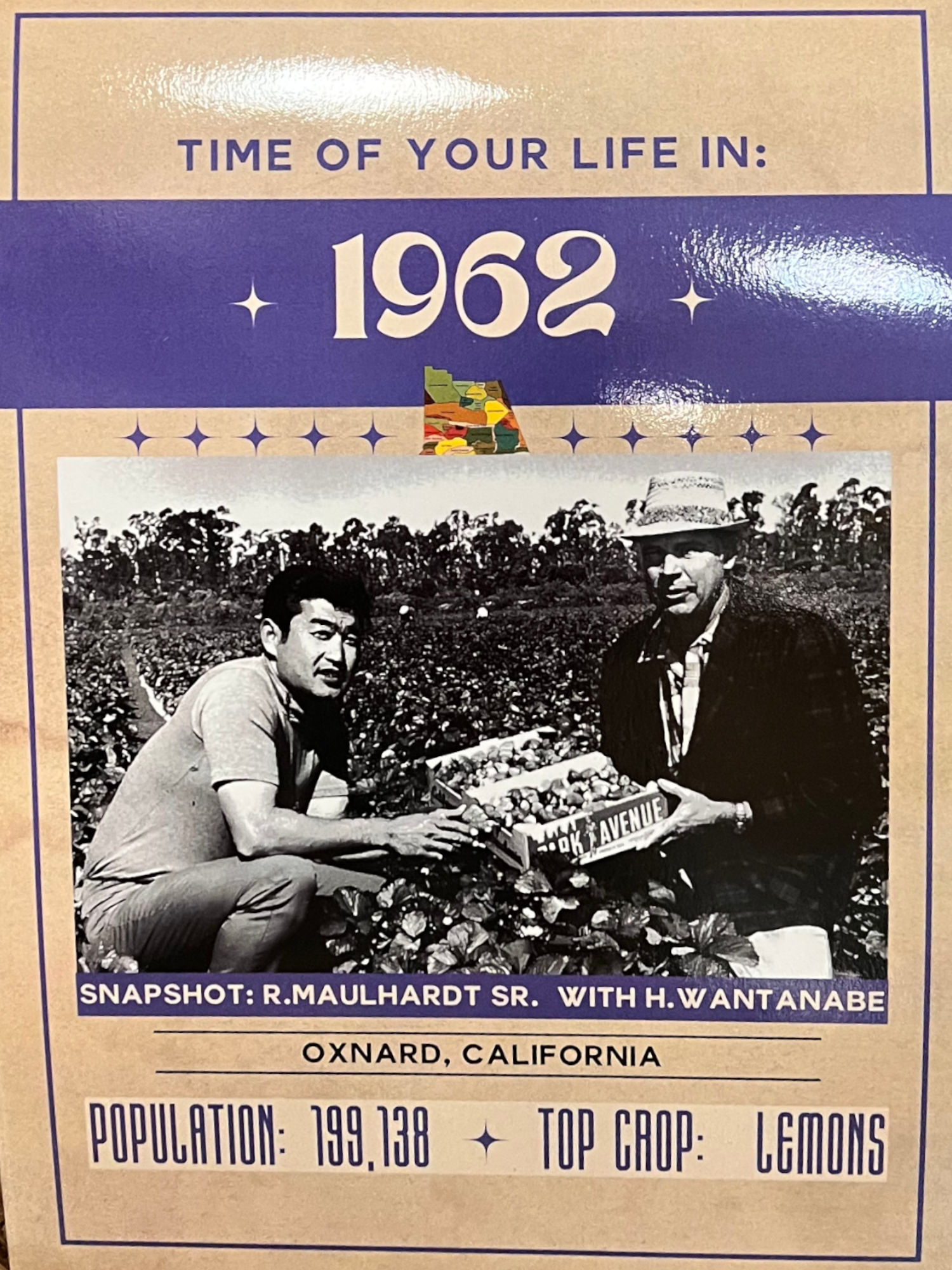 |
SNAPSHOT: R. MAULHARDT SR. WITH H. WANTANABE OXNARD, CALIFORNIA
|
Lemons were the number one commodity with Valencia oranges second. Livestock and poultry were combined into one category, coming in third. The 1960s marked a change in the American lifestyle and politics that impacted every industry. The counterculture movement of the 1960s influenced dietary changes in America. Healthier eating became a trend, allowing vegetables to be represented as separate commodities instead of grouped together.
Tomatoes ranked fourth, celery fifth, lettuce sixth and green beans seventh, showcasing America's increased health consciousness. Dairy products dropped to eighth place. Lima beans dropped to the ninth spot due to local competition from higher value row crops. Navel oranges, in tenth place, would leave the top ten spot in the crop report this decade. Military funding of chemical research had introduced agriculture to the effectiveness of DDT and other insecticides.
During this decade, the Vietnam War increased the research and manufacturing of herbicides for military and agricultural use. While this significantly increased production and kept America fed through WWII, these pesticides were used without a full understanding of the environmental impact. This became a significant concern for the counterculture movement of the 1960s, whose ideas of sustainability and environmentalism laid the groundwork for the organic movement in the 1990s.


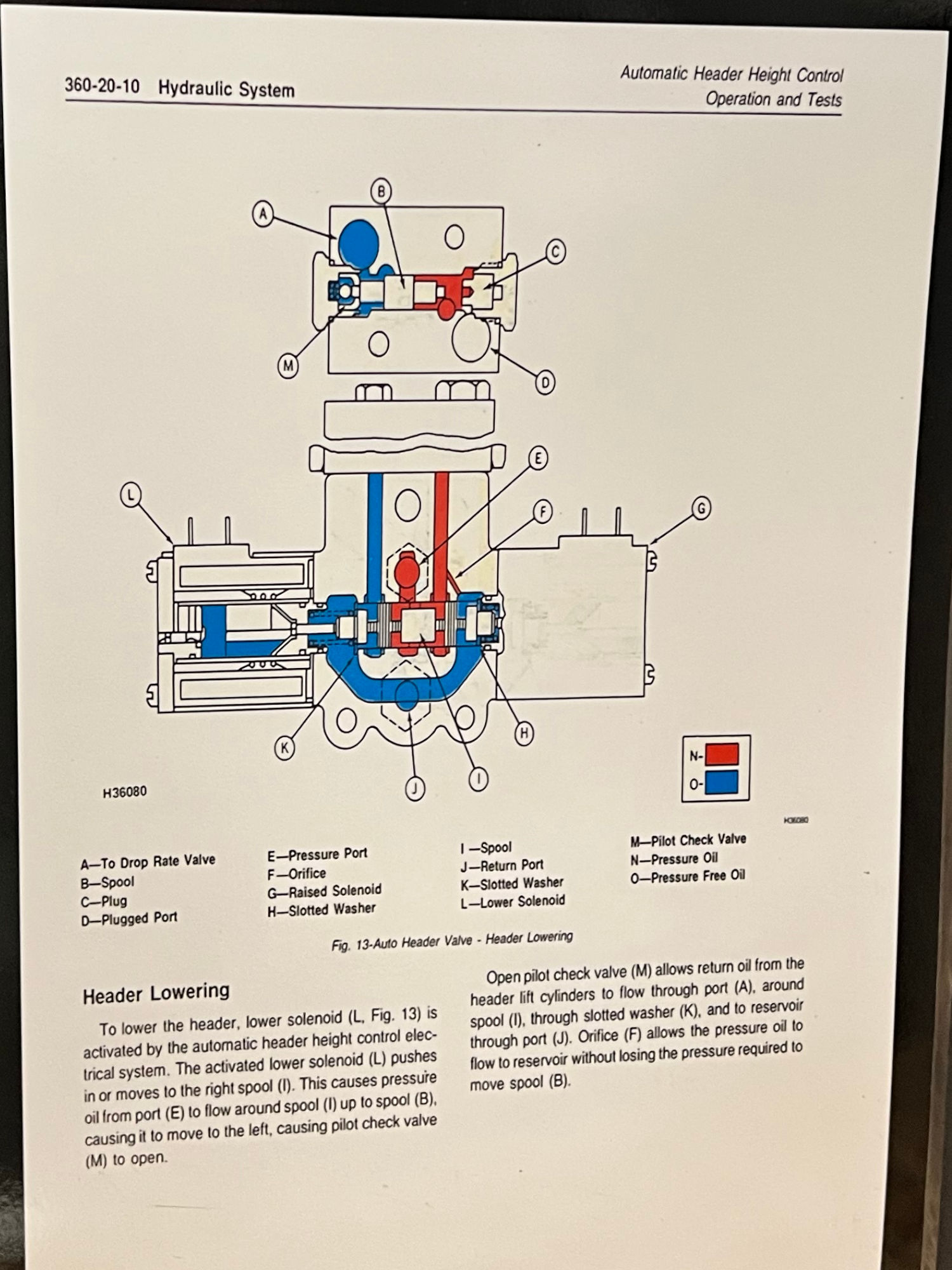 Have you ever heard of a tractor that didn't make it to the finish production line? This was the first one.
Have you ever heard of a tractor that didn't make it to the finish production line? This was the first one.The HT-340, aka Hydrostatic Turbine 340, utilized a gas turbine engine to power this hydrostatic drive tractor. With a cry of a fighter plane and the engine of one.
This tractor became more of an achievement of pushing boundaries of what agricultural machinery could be.
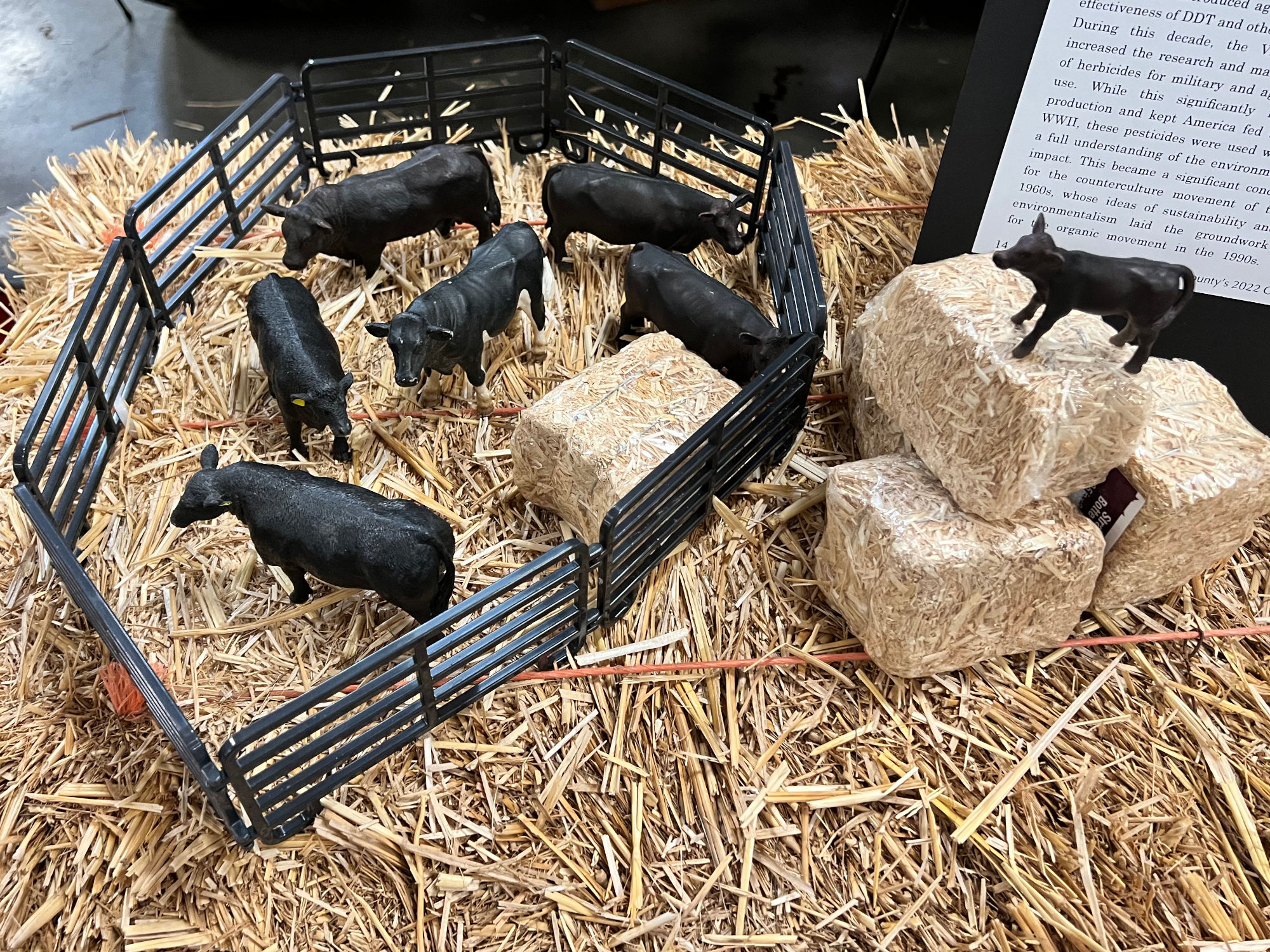
Amidst the shadows of the looming Vietnam War, the local Hobson brothers packing company's feedlot worked tirelessly to meet the surging demand. Once the first slaughterhouse in Ventura, the historic site now houses the Patagonia headquarters, a reminder of the county's rich agricultural heritage.
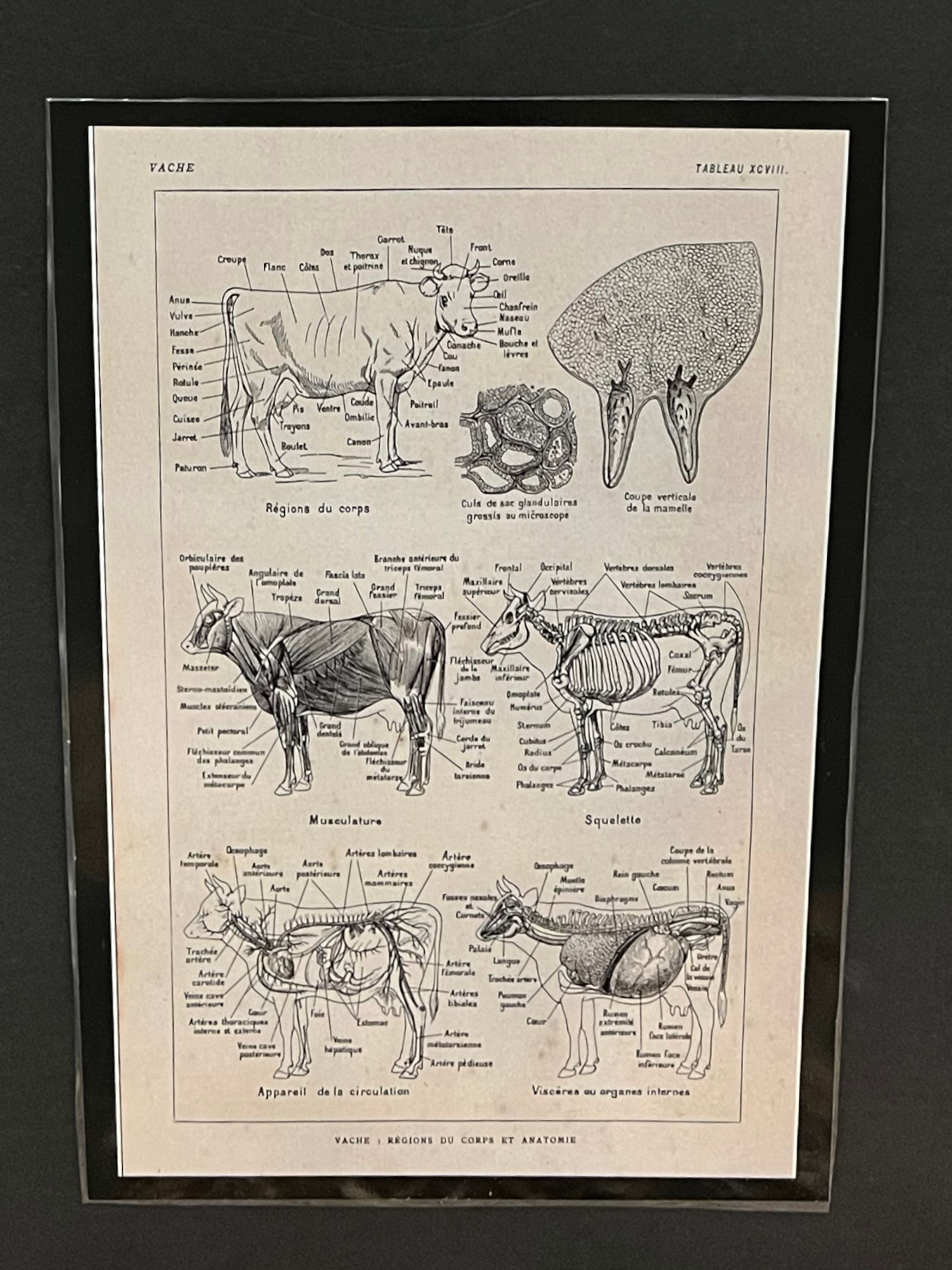 >
The Hobson brothers, with ranches spread across Santa Paula, Ventura, and Ojai, operated a large feedlot in Oxnard, where cattle were driven each summer after grazing on the grass.
This decade witnessed their dedication elevate the livestock and dairy industry to new heights.
>
The Hobson brothers, with ranches spread across Santa Paula, Ventura, and Ojai, operated a large feedlot in Oxnard, where cattle were driven each summer after grazing on the grass.
This decade witnessed their dedication elevate the livestock and dairy industry to new heights.
Within the county's boundaries, a revolution in dairy took root, as home delivery for dairy products became a trend. The sanitary dairy in Fillmore led this transformation, pioneering advancements like electric milking machines. With dedication to quality and service, the sanitary diary served over 300 customers, delivering fresh milk straight from the cow to consumers' doorsteps.
As the 1960s marked a period of progress and tradition, Ventura County's livestock and dairy endeavors left and inedible mark on its history, adding a chapter to the "tail" of this era.
| 1972 | |
|---|---|
| County of Ventura Agriculture / Weights & Measures | |
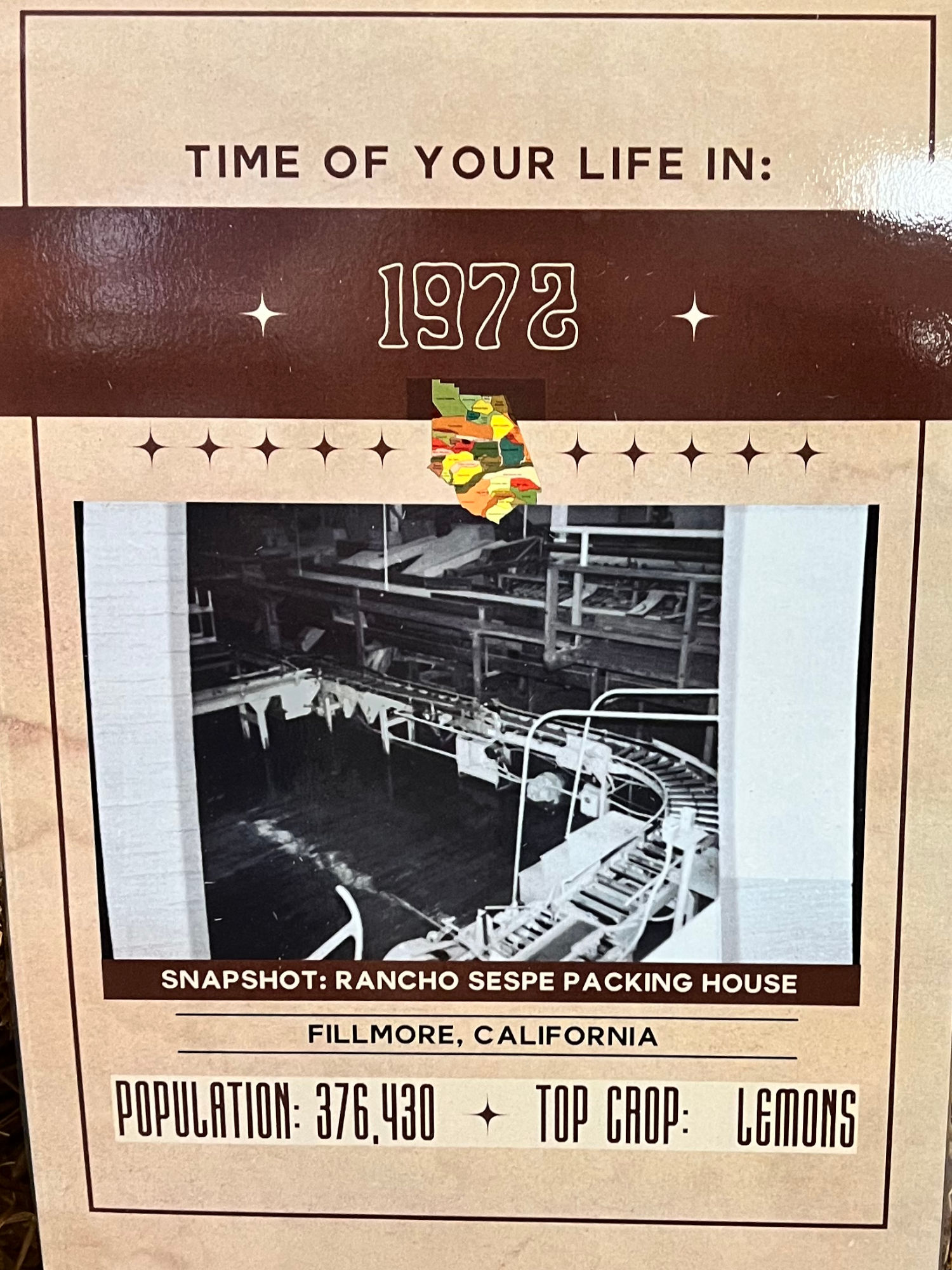 |
SNAPSHOT: RANCHO SESPE PACKING HOUSE FILLMORE, CALIFORNIA
|
Lemons kept the top spot as the most valuable crop. The previously combined livestock and poultry category added dairy, bringing it into the number two spot, despite challenges. The Hobson Brothers Feedlot in Ventura closed, impacting the livestock numbers for the county. Exotic Newcastle Disease was mentioned in the 1972 Crop Report, but the impact on poultry wouldn't be felt until the following year. In third place was celery, and tomatoes ranked fourth, followed by strawberries' first appearance in the top ten at fifth.
Ventura County farmers faced challenges including the growing urbanization of Southern California along with changing prices and demand for crops. Farmers reacted to those challenges with new technology, advancements in cultivation methods, or innovative crop varieties.
Strawberries, being incredibly fragile and spoiling rapidly, benefited from several developments. The growth of nearby cities and the improvements to produce transportation provided a larger market for Ventura strawberry production.
This decade marked the beginning of fumigating strawberry fields, which boosted productivity and profitability. Valencia oranges, lettuce, avocados, miscellaneous vegetables, and Lima beans were the rest of the top crops. This decade brought avocados into the top ten

Though glyphosate was first conceived in 1950 by chemist Henry Martin, martin could not find a pharmaceutical use for glyphosate. Scientists from Monsato happened upon the same chemical discovery in the 1970s. This chemical (glycine and a phosphonate) was later marketed as Roundup weed killer. Glyphosate products have become the most widely used herbicide to date.
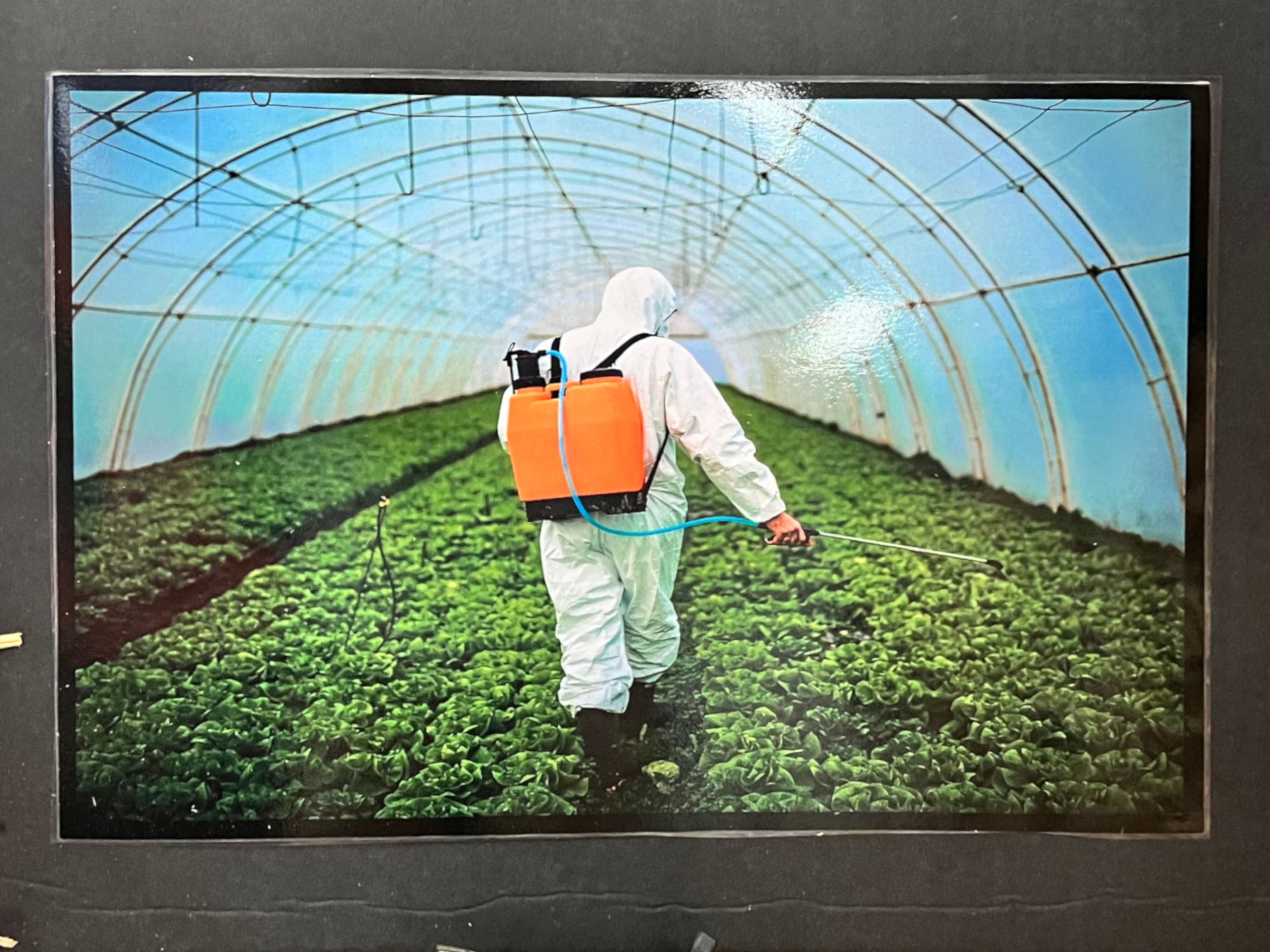

There was a dramatic change in water irrigation to accommodate farming fields with irregular shapes. The linear irrigation system offered a fair alternative to center-point pivot irrigation. The linear irrigation machines moved forward and back across a field moving in a straight line. For rectangular or square fields, the linear irrigation machines increased watering efficiency to 92-98%. In 1977, Valmoont produced the first linear irrigation system to farmers. This two-wheel linear was available for both ditch and hose feed for water delivery. The ditch feed dipped into a concrete canal or earth ditch, while a hose feed dragged alongside the field needing water. Essentially, watering with no hands or watering with very long mechanical hands or watering with no hands in a straight line.
| 1982 | |
|---|---|
| County of Ventura Agriculture / Weights & Measures | |
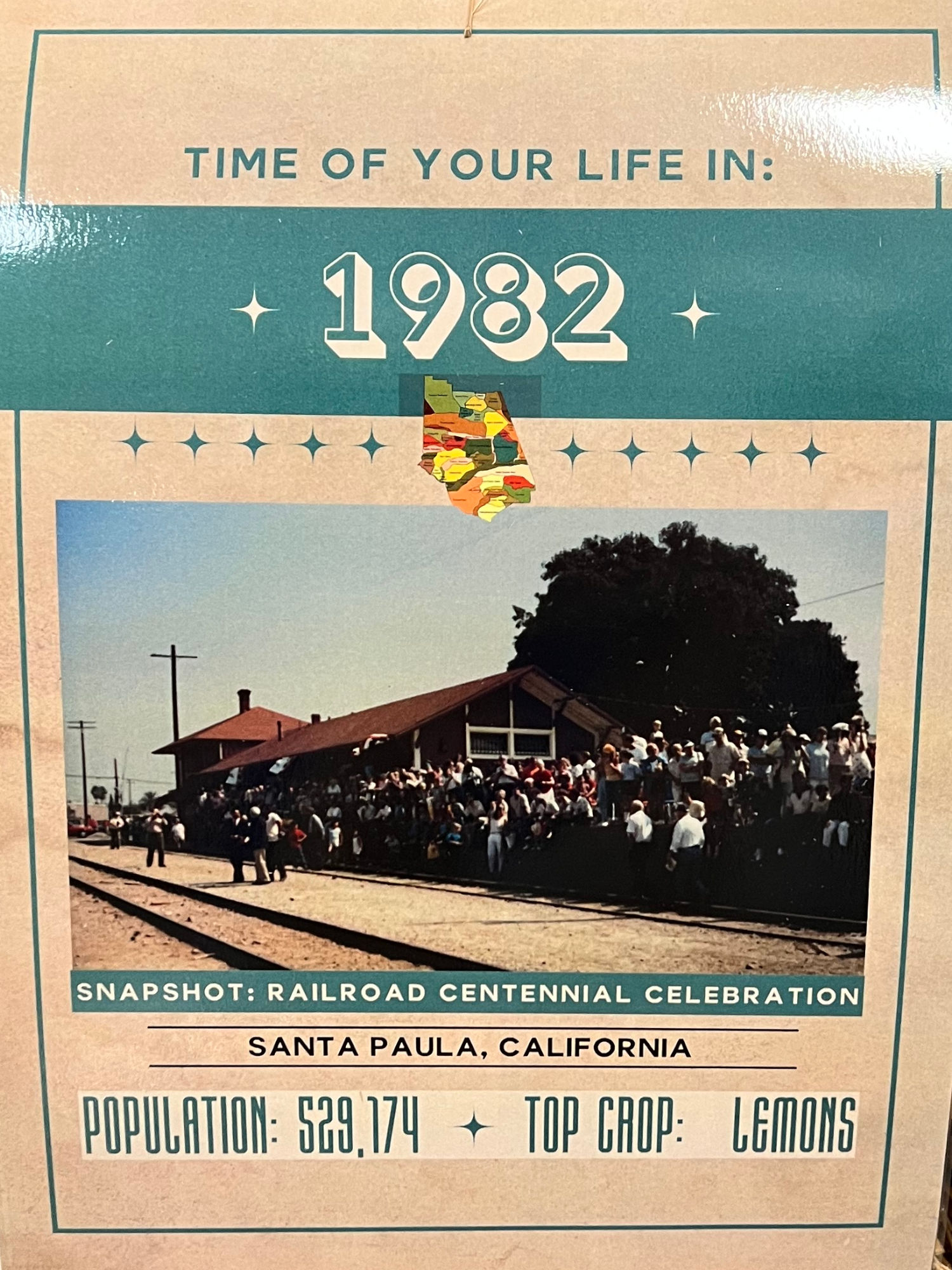 |
SNAPSHOT: RAILROAD CENTENNIAL CELEBRATION SANTA PAULA, CALIFORNIA
|
The United States experienced a major agricultural crisis during the 1980s. By the mid-1980s, the crisis had reached its peak. Land prices had fallen dramatically leading to record foreclosures.
Lemons had stayed in the top spot for sixty years, but the threat of urban expansion put pressure on the lemon groves. Once planted, it takes years for lemons to start producing. This business model was sustainable for large growers, but several smaller orchards had to shift to row cropping to survive.
Celery production stayed strong, keeping it at the second position as demand grew for fresh vegetables. The processed food industry used celery as both an ingredient and, more subtly, as a seasoning. Poultry and dairy production were paired for the third spot. Strawberry production and consumption stayed relatively contained in California, but the state's population was enough to put strawberries in the fourth spot. The competition from Florida oranges was enough to keep Valencias in fifth position. Ventura County horticulturalists and botanists experimented with breeding and growing several varieties of drought and pest-tolerant vegetables, making seed export the sixth commodity.
The sustainability movement of the 1980s also brought homeowners awareness of their environmental impact. The term "xeriscaping" was coined by David Salman in this decade, which is the process of landscaping with drought-tolerant plants that don't require irrigation. This change in home gardening and the ease of transplanting for farmers made nursery stock the seventh most popular commodity. The growing trend of health-conscious eating was reflected with lettuce in the eighth place, avocados in ninth place, and broccoli in the tenth position.

In the 1980s, the words climate change and global warming loomed over people like the bogeyman. After a NASA climate scientist testified to the the senate, in 1988, it became clear these words were here to stay. Though the everyday man didn't understand or feel the warming effects, cities and states did and placed water restraints onto farmers and homeowners. Water was not going to be available always and there needed to be a way to collect it or reduce its runoff.
Micro-irrigation systems, microtubing, flow drip emitters, drip irrigation. All were devices/strategies to-save 20-50% more water than traditional spray sprinklers.
| 1992 | |
|---|---|
| County of Ventura Agriculture / Weights & Measures | |
 |
SNAPSHOT: JAMES STEHLY AND BEAGLE FILLMORE, CALIFORNIA
|
The 1990s would see the international market for Ventura County agriculture products widening. In 1994, NAFTA, the North American Free Trade Agreement, was signed between Canada, Mexico, and the United States. NAFTA was designed to reduce the trade barriers between the three countries, increasing agricultural exports to our neighbors.
Lemons remained in the number one spot. Strawberries benefited greatly from NAFTA, as the expansion of cooling facilities into Canada and Mexico pushed it into the second most valuable crop position. Celery was third in value, and nursery stock took the fourth, with suburbs and cities driving the demand for landscaping. Valencia oranges were in fifth place. Avocados rose to sixth, despite high temperatures and competition from growers in Chile. Lettuce was seventh in value, and cut flowers appeared in eighth place. Imports of cut flowers often trended above national production, but the demand in the U.S. market was so significant that flowers could make it on the list. Broccoli was ninth in value, and cabbage in tenth.
Although California had established standards for organic farming in 1979, the USDA didn't establish federal standards until 1990. The USDA was then able to legitimize the organic market, allowing organic sales in grocery stores to grow 20% annually from the late '80s into the '90s.

 The design of a machine receiving its marching orders from a signal outside anywhere in the world was not just great science fiction, but the direction for many farm.. in the 1990s.
In 1992, a Northern California electronics engineer used initial opt.. research developed in 1991 to devise a way to detect and spray weeds.
His di.. founded a variable rate fertilizer application called Greenseeker.
The design of a machine receiving its marching orders from a signal outside anywhere in the world was not just great science fiction, but the direction for many farm.. in the 1990s.
In 1992, a Northern California electronics engineer used initial opt.. research developed in 1991 to devise a way to detect and spray weeds.
His di.. founded a variable rate fertilizer application called Greenseeker.
In 1992, Trimble used Global Positioning System (GPS) satellites to develop it.. kinematic technology. The technology accurately provided step-by-step .. moment location updates while moving. This become the base for high-accuracy guidance systems for agricultural equipment.
That same year, Satloc Inc. created the first GPS Lightbar. The lightbar was a receiver for guidance with aerial applications. Later, the technology adapted (no on its own) to ground application too. Closing out the decade, the Autofarm Agricultural Division of Novariant launched the first commercial automated steering system for farm equipment using GPS, in 1993.
Strawberries took the number one spot, finally dethroning lemons. New lemon groves became too risky with already-established grower cooperatives, and the permanence of lemon groves meant that farmers could not diversify thier fields. Once the strawberry fields were picked, the space could be replanted with several other seasonal fruits and vegetables. There were still plenty of cooperatives producing large quantities, but lemons dropped to second in production. Nursery stock values ranked third, taking the pressure off farmers to start from seed and supplied the demand as home gardening grew. Celery, remarkably quick and easy to grow, made it an excellent rotational crop and the fourth place commodity. Avocados ranked fifth in production. Although the 2000s recession drew people away from spending on extras, the cut flower industry still bloomed into the sixth spot. In the seventh position were tomatoes, followed by peppers, which were new to the top ten crops of the county. Ninth place was held by Valencia oranges. Lastly, the number ten crop was another newcomer, raspberries. This crop, like strawberries, benefited from modernizations in cooling and packing, allowing them to be enjoyed fresh, frozen, and preserved in markets globally.
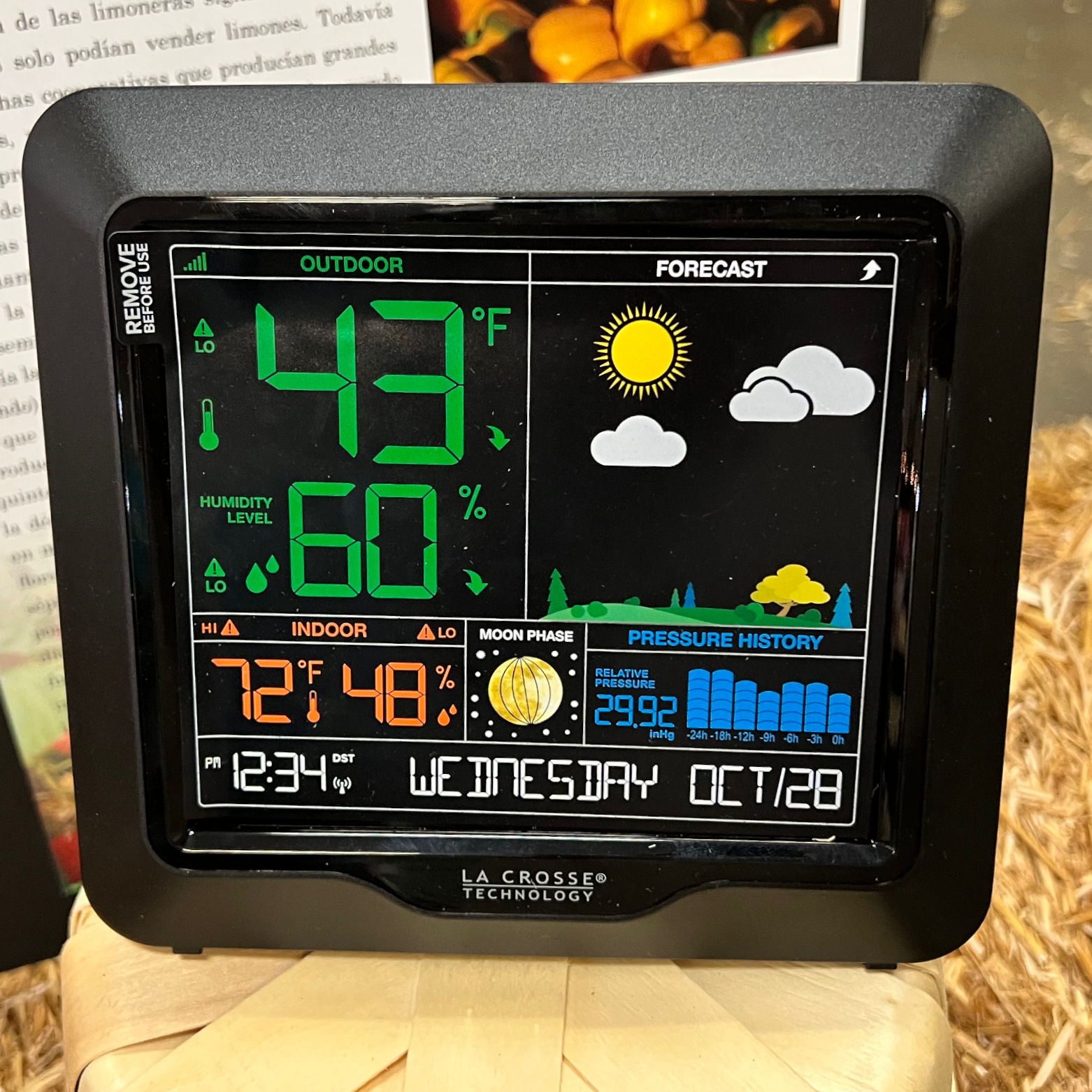
 Don't have time to watch the news to get weather?! Well, you don't have to with a home weather station.
Don't have time to watch the news to get weather?! Well, you don't have to with a home weather station.
A home weather station not only gives it user news report, but the station has access to online reports.
These online reports gather information miles away, say at an airport, or more localized details, from a farmer.
The home weather stations may provide warnings to areas in emergency conditions, like tornadoes, hurricanes, or rain - all which do not occur in California. Yet!
Home weather stations operate simply as a rain gauge or as complex as a modern weather station.
| 2012 | |
|---|---|
| County of Ventura Agriculture / Weights & Measures | |
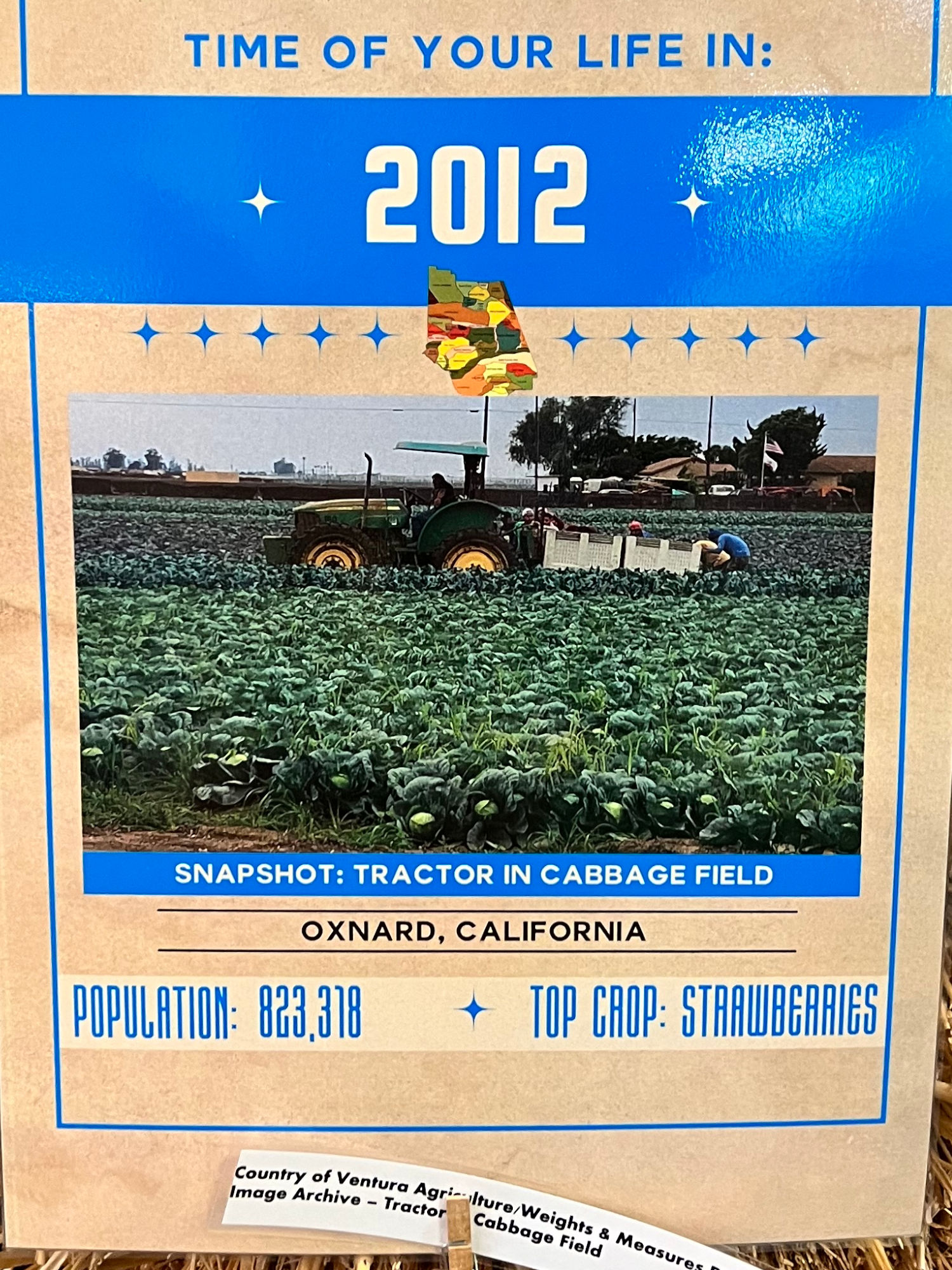 |
SNAPSHOT: TRACTOR IN CABBAGE FIELD OXNARD, CALIFORNIA
|
Strawberry production from Mexico started to compete with Californa markets yet strawberries remained the top commodity. Urbanization pressures continued to rise, but extreme weather became the new threat to farmers. Higher temperatures combined with drought, damaged plants, and the heat created an environment in the soil that allowed pests and diseases to thrive. Despite these challenges, production remained high with lemons second. By 2012, raspberries had grown in importance and jumped to third place. Critical factors in these changes were the growing demand for healthy food and the industry's adoption of hoop houses, which increased production and extended the growing season for raspberries. Weather extremes didn't just make things hotter but also brought colder temperatures, damaging frost-sensitive commodities. On a positive note, the new conditions drove innovation. Biotechnology companies reintroduced enzymes into the soil, engineers developed better irrigation technology and botanists bred new drought-resistant crops. The nursery stock business created an environment where growers could test their new developments, making nursery stock the fourth commodity. Celery was fifth, avocados were sixth, and tomatoes were seventh. Peppers moved up to eighth place. Cut flowers were starting to be out-competed by imports, bringing it to the ninth place. Moving into the top ten for the first time was cilantro, possibly reflecting changes in consumer tastes.

Drones have been 'in the air' since the late 90s, but the first agricultural drone flew in the early 2000s. In 2015, the centre for field robotics developed a fixed-wing drone to monitor weeds, and later spray the weeds with an herbicide quadcopter (drone with four helicopter like rotors). Typically, agricultural drones are tasked with:
- Crop Inspections
- Pest / Disease Identification
- Irrigating
- Crop Mapping
- Crop Estimation
- Climate Data

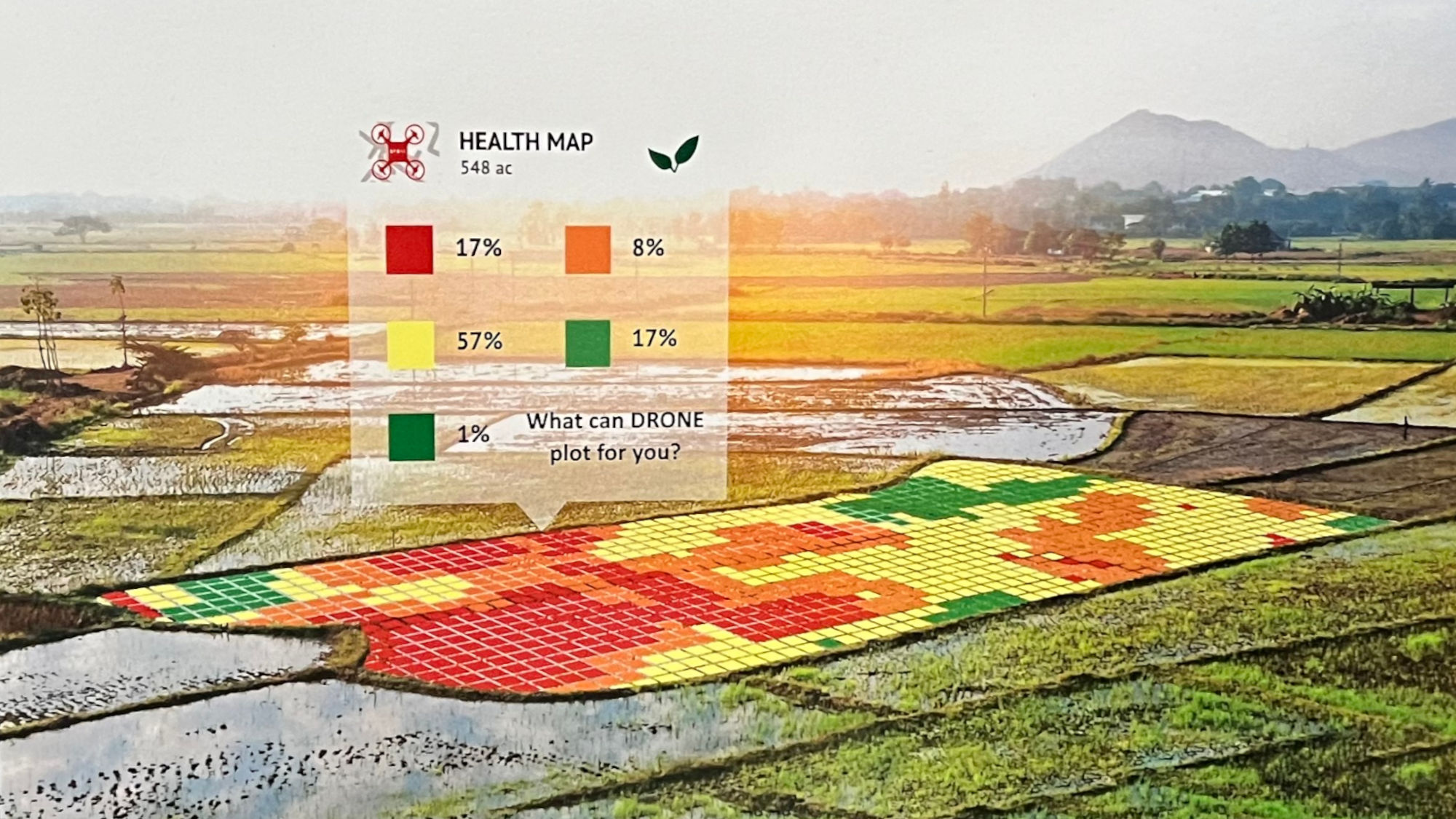
| 2022 | |
|---|---|
| County of Ventura Agriculture / Weights & Measures | |
 |
EXHIBIT: VENTURA COUNTY FAIR VENTURA, CALIFORNIA
|
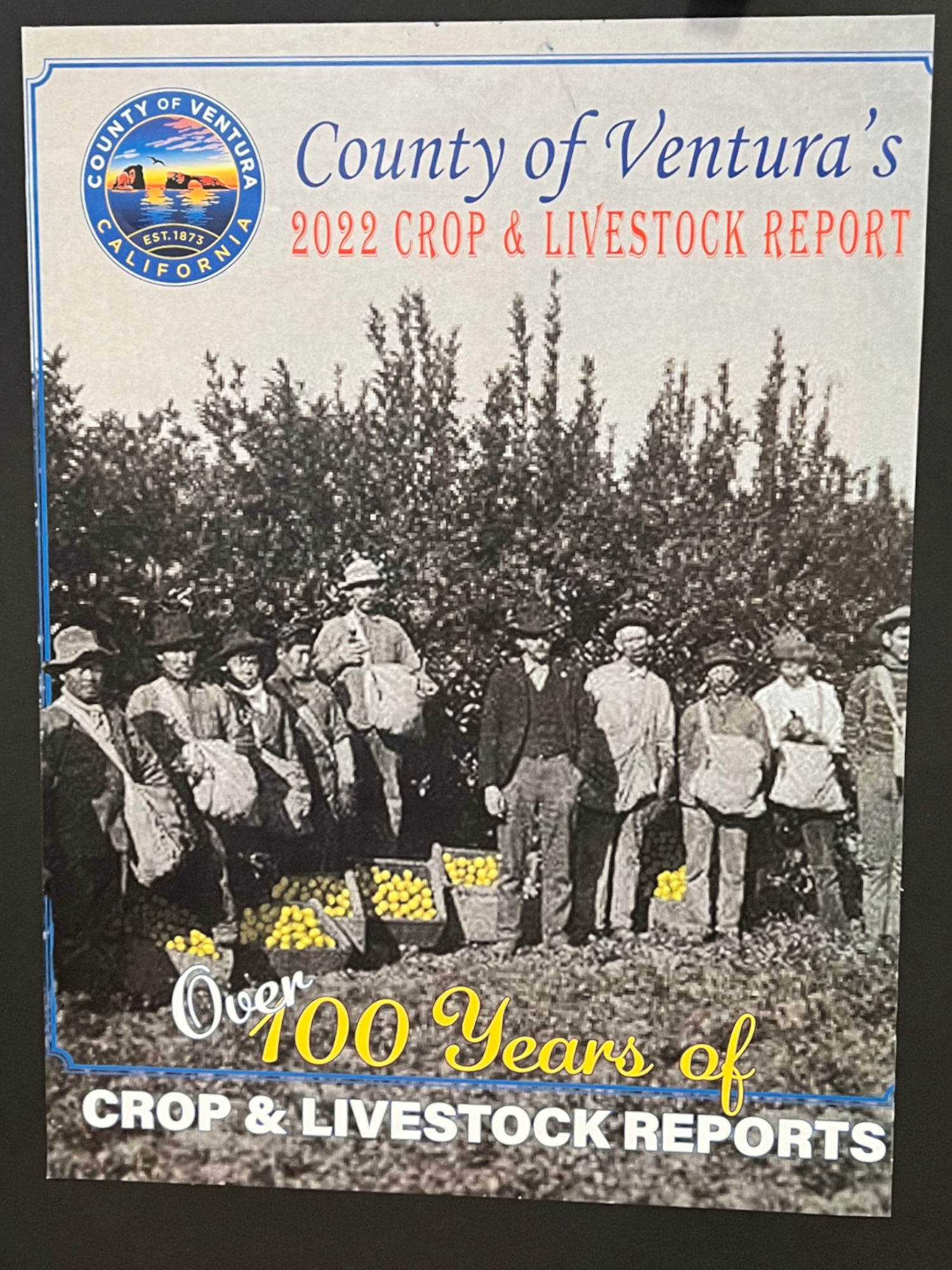


Woah! You made it! You're back to the future. The last agricultural machine is a Laserweeder from Carbon Robotics (featured on NBC Nightly News on June 2023). This vehicle not only uses implements like a tractor but shoots lasers from its eyes (well, maybe not its eyes - more like from its undercarriage). It utilizes high- resolution cameras and artificial intelligence to distinguish between weeds and crops all at once. It holds a database worth of plant species to boost yield and lower farming cost. It works in any weather and day or night. Graphics processing units are a series of microprocessors designed to unite parallel computing and visual imagery, or fancy talk for it can process complex 2d and 3d images fast! It is marketed to do the job of 30 workers for 24 hours / 7 days a week. A brave new world.
